
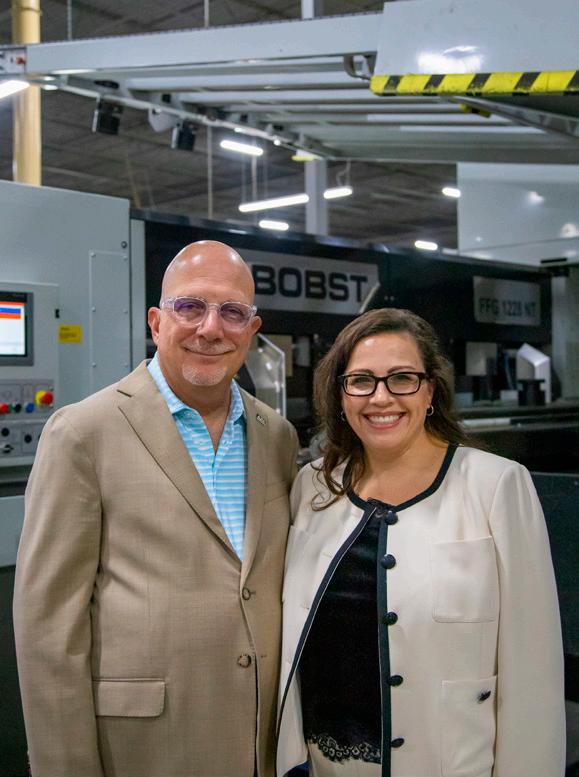

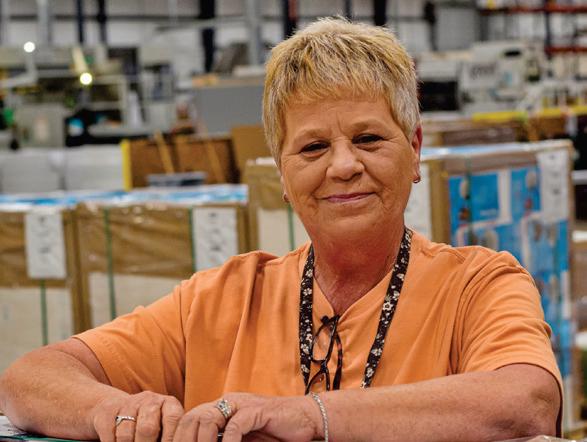





LPC veteran Teresa Church is another one of our Champions of More who is committed to giving you more. With 40 years of experience in shipping, when you work with Teresa, you get more experience. LPC provides printed products for clients all across North America, preparing over one thousand shipments each and every week. You get more quality. More fexibility. And more optimum condition deliveries. Teresa makes up the backbone of our shipping team that is committed to making sure what is ordered is delivered. Because, like all of us here at LPC, she loves her work. And you’ll love ours. LPC. Champions of More
Printing Company + Huston Patterson






OFFICERS
Chairwoman: Terri-Lynn Levesque, Royal Containers Ltd., Brampton, Ontario, Canada
First Vice Chairman: Joseph Morelli, Lewisburg Patterson Co., Decatur, Illinois
Vice Chairmen: Mike Schaefer, Tavens Packaging & Display Solutions, Bedford Heights, Ohio
Eric Elgin, Oklahoma Interpack, Muskogee, Oklahoma
Josh Sobel, Jamestown Container Cos., Cleveland, Ohio
Immediate Past Chairman: Gary Brewer, Package Crafters, High Point, North Carolina
Chair, Past Chairmen’s Council: Matt Davis, Packaging Express, Colorado Springs, Colorado
President: Michael D’Angelo, AICC, The Independent Packaging Association, Alexandria, Virginia
Secretary/General Counsel: David Goch, Webster, Chamberlain & Bean, Washington, D.C.
Administrator, AICC Canada: Leah Gardiner Administrator, AICC México: Veronica Reyes
DIRECTORS
Great Lakes: Brock Welch, Welch Packaging , Elkhart, Indiana
Midwest: Cassi Malone, Corrugated Supplies Co., Bedford Park, Illinois
Northeast: Larry Grossbard, President Container Group Wood Ridge, New Jersey
Southeast: Chad Wagner, Peachtree Packaging & Display, Lawrenceville, Georgia
Southwest: Jordan Dawson, Harris Packaging , Haltom City, Texas
West: Sahar Mehrabzadeh-Garcia, Bay Cities, Pico Rivera, Califormia (interim)
AICC Canada: George Perreira, Moyy/Whitebird Hamilton, Ontario, Canada
AICC México: Jorge Ortega, Soluciones de Empaques S. de R.L. de C.V., Hermosillo, Sonora, Mexico
OVERSEAS DIRECTOR
Greg Jones, SUN Automation Group, Glen Arm, Maryland
DIRECTORS AT LARGE
Jenise Cox, Harris Packaging , Haltom City, Texas
Sarah Mehrabzadeh-Garcia, Bay Cities, Pico Rivera, California
Casey Shaw, Batavia Container, Batavia, Illinois
Stuart Fenkel, McLean Packaging , Pennsauken Township, New Jersey
Jack Fiterman, Liberty Diversified International, Minneapolis, Minnesota
Evan Clary, National Corrugated Machinery, Hunt Valley, Maryland
Cody Brant, A.G. Stacker Inc., Weyers Cave, Virginia
Nick Catania, BHS Corrugated–North America, Aurora, Illinois
ASSOCIATE MEMBER DIRECTORS
Chairman: Jeff Dietz, Koenig & Bauer (US), Dallas, Texas
Vice Chairman: Mike Butler, Domtar Packaging Fort Mill, South Carolina
Secretary: Brian Foley, Bobst, Phoenix, Arizona
Director: Warren Bird, JB Machinery, Westport, Connecticut
Immediate Past Chairman: John Burgess, Pamarco, Roselle Park, New Jersey
ADVISORS TO THE CHAIRWOMAN
Joe Palmeri, Jamestown Container Cos., Cleveland, Ohio
Al Hoodwin, Michigan City Paper Box, Michigan City, Indiana
Jeff Dietz, Koenig & Bauer (US), Dallas, Texas
PUBLICATION STAFF
Publisher: Michael D’Angelo • mdangelo@AICCbox.org
Editor: Virginia Humphrey • vhumphrey@AICCbox.org
EDITORIAL/DESIGN SERVICES
YGS Association Solutions • www.YGSAssociation Solutions.com
Vice President, Association Solutions: Craig Lauer
Creative Director: Mike Vucic
Senior Managing Editor: Sam Hoffmeister
Copy Editor: Steve Kennedy
Art Director: Alex Straughan
Account Manager: Jillian Mengel
SUBMIT EDITORIAL IDEAS, NEWS, AND LETTERS TO: BoxScore@theYGSgroup.com
CONTRIBUTORS
Cindy Huber, Director of Conventions and Meetings
Chelsea May, Meeting Manager
Laura Mihalick, Senior Meeting Manager
Patrick Moore, Membership Manager
Taryn Pyle Director of Training, Education, and Professional Development
Rebecca Rendon, Senior Manager, Education and Training
Alyce Ryan Membership Marketing Senior Manager
ADVERTISING
Taryn Pyle
703-535-1391 • tpyle@AICCbox.org
Patrick Moore
703-535-1394 • pmoore@AICCbox.org
AICC
PO Box 25708 Alexandria, VA 22313
Phone 703-836-2422
Toll-free 877-836-2422 Fax 703-836-2795 www.AICCbox.org
AICC provides the education, tools, and information your company and employees need to thrive in the paper packaging industry.
Legacy is often imagined as a statue, a plaque, or a title etched into history. But true legacy isn’t what we leave behind—it’s what we pass forward. It lives in the people we mentor, the cultures we shape, and the values we embed in future leaders.
A true leader’s legacy is not measured by what they achieve alone, but by what others accomplish because of them. That truth has never been more urgent than it is today, and it is the heart of my theme as your new chairwoman: Legacy in Action: Inspiring Tomorrow’s Leaders. A leader’s true legacy is reflected in the achievements of those who follow in their footsteps.
We live in a time of rapid change. Industries are being reshaped by digital disruption, shifting markets, and the nonnegotiable demand for sustainability. Workforces are more diverse, dynamic, and multigenerational than ever before. With five generations side by side in the workplace, the opportunity—and challenge—is enormous.
The best leaders are not just focused on delivering quarterly results. They are bridge-builders between today and tomorrow. They recognize that wisdom and tradition must stand alongside innovation and digital fluency. They understand that resilience is not born from one generation, but from many working in concert.

That is why “legacy in action” matters. It is not a passive reflection we consider at retirement. It is active, intentional, and visible in how we lead today. It shows up when a senior leader invests in mentoring someone outside their department. When a company rewrites its leadership framework to value empathy and inclusion as highly as performance. When a leader models integrity—knowing that character, not just key performance indicators, shapes enduring success.
And perhaps most importantly, it shows up in how we make space for emerging leaders. The next generation is not just waiting in the wings—they are already transforming how we communicate, collaborate, and innovate. They are asking the hard questions, challenging the status quo, and pushing organizations to align purpose with practice. Our responsibility is not to temper that energy, but to cultivate it.
Leadership, at its core, is not about power. It is about responsibility and service. Every meeting we walk into, every decision we make with integrity, every young professional we choose to champion—those are acts of legacy in action.
The question for today’s leaders is simple but profound: What kind of legacy are you living, right now?
I will develop this theme throughout the coming year because leadership is never just about us. It is about what we make possible in others. And when we embrace that truth, legacy stops being something we leave behind. It becomes something alive—multiplying through the people, organizations, and communities we touch.
That is leadership worth remembering. And more importantly, it is leadership worth continuing.

Terri-Lynn Levesque Vice President of Administration, Royal Containers AICC Chairwoman
BY RYAN FOX
Arecord 3.68 million tons of North American containerboard capacity is set to close in 2025, reshaping the corrugated packaging industry and forcing a recalibration of supply, demand, and pricing dynamics. This report examines how capacity has evolved, where it may be headed, and what the implications are for producers, buyers, and investors.
In containerboard markets, capacity refers to the volume of supply a mill can produce over a given period. The most common reference point is nameplate capacity, the figure a company provides to the public. For example, Domtar’s Kingsport, Tennessee, mill has a listed nameplate of 600,000 short tons a year.
Nameplate capacity, however, signals only a mill’s potential; it doesn’t always reflect real-world operating conditions. Effective capacity better captures actual supply to the market. The distinction is critical when assessing industry balance, pricing power, and the impacts of new investments or closures.
Industry trackers such as the American Forest & Paper Association and Numera Analytics adjust capacity for planned maintenance downtime, as well as shifts in production across multiple grades of containerboard and packaging papers. Capacity is also influenced by the ramp-up of new mills as operators resolve startup issues and gradually add customers.
What doesn’t affect capacity is unplanned downtime due to mechanical failures or quality issues. “Economic” downtime, when a mill idles for lack of demand, isn’t accounted for either—part of the reason why mill operating rates have been so low for the past two years.
The difference between nameplate and effective capacity raises an important question for market analysis. If a mill allocates some machine time to grades other than containerboard, the result is lower effective capacity. That adjustment, in turn, affects the reported mill operating rates often cited as justification for price increases.
This introduces a degree of subjectivity. Operating rates can look tighter when mills divert production away from containerboard even if underlying demand is unchanged. This suggests that operating rates should be viewed as directional rather than absolute. Their value lies in signaling trends, not in gauging balances in supply and demand.
To assess true market tightness, capacity data must be paired with shipments,
inventory, customer order backlogs, and demand indicators.
There will always be a gap between containerboard supply and demand in a healthy market, since producers want mills to run consistently but not at full throttle. Some margin is needed for maintenance downtime, building inventory,
The APSTAR Full Line offers unmatched integration, efficiency, and flexibility to meet the unique demands of your plant.























































































Whether you're building a new line or upgrading an existing one, APSTAR gives you the tools to create a smarter, faster, and more reliable operation—from the first sheet to the finished stack.
Backed by Haire Group’s 24/7 service and parts support, your investment is protected, your uptime is maximized, and your competitive edge is secured.









or handling spikes in orders. Extra room also provides flexibility to shift production across grades or redirect supply to exports when conditions change.
The challenge arises when the gap grows large enough to depress operating rates and undermine pricing power. The global financial crisis of 2008 and
2009 triggered a sharp contraction in box demand, with order volume falling 4% in 2008 and another 7.7% in 2009. Demand began to recover in 2010, rising 3.5%, and then grew slowly but steadily through the following decade. Capacity expanded more aggressively. From 2010 to 2021, nameplate containerboard capacity rose 22% to more than 45 million tons from about 37 million. Domestic demand climbed just 16%, with the final 6% coming during the pandemic-driven surge in e-commerce.

Ryan Fox is a corrugated market analyst at Green Markets, a Bloomberg company. He can be reached at rfox93@bloomberg.net


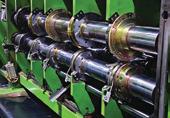

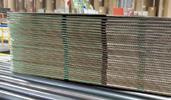


Bringing together decades of German engineering expertise and industry-leading technology
SUN Automation Group and Kolbus Group unite to deliver precision automation for the corrugated packaging industry. Kolbus’ high-accuracy machinery ensures consistent, highquality converting, while SUN’s parts and service offerings enhance reliability and performance. Together, we advance packaging innovation.




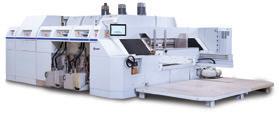
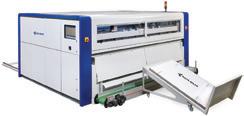
BY ERIC ELGIN
For years, 529 savings plans have been widely recognized as a tax-advantaged way for families to save for college tuition. Traditionally, these funds were limited to expenses at four-year universities, creating the perception that higher education had to follow a single academic pathway. Recent changes, however, have expanded the use of 529 accounts to include technical and trade schools, a shift that carries significant benefits for students, American manufacturers, and AICC members.
AICC, through our partners on Capitol Hill, fought for this change in how 529 accounts may be used.
Technical and trade schools provide the hands-on training required for careers in advanced manufacturing, machining, robotics, and other skilled professions. By allowing 529 savings to cover these programs, families now have greater flexibility in choosing the educational path best suited to their child’s strengths and interests. This expansion helps remove financial barriers for students who may prefer or excel in a technical career rather than pursuing a traditional four-year degree.

high-demand skills, yet too often, students are steered away from these opportunities. By aligning educational savings with technical and trade programs, 529 expansion sends a clear signal: Skilled careers are equally valuable and worthy of investment!
For AICC members, this is especially good news. Across the country, manufacturers continue to face a shortage of skilled workers, with thousands of well-paid positions going unfilled. The manufacturing sector depends on a pipeline of talent trained in practical,
The impact extends beyond workforce development. Families who save in 529 plans gain tax advantages while ensuring their children have multiple options for postsecondary education. Meanwhile, manufacturers benefit from a stronger, more diverse pool of workers prepared to operate and innovate in modern facilities.
In short, the expansion of 529 plans to cover trade and technical schools is more
than just a financial adjustment—it’s a cultural one. It elevates the status of technical education, strengthens the manufacturing workforce, and provides young people with clearer, more affordable pathways into rewarding careers. For AICC members that thrive on skill, precision, and innovation, this is a step in the right direction.
Make sure you take advantage of it!

Eric Elgin is owner of Oklahoma Interpak and chairman of AICC’s Government Affairs subcommittee. He can be reached at 918-687-1681 or eric@okinterpak.com


• Only standard hand tools are required for all maintenance
• Direct drive with no chains or sprockets
• No tools for media change required
» just zip it up
» media change out in minutes
• Filter is accessible for visual inspection during operation,
» no shutdown required
• Filter media advantages
- high dust collection efficiency
- low pressure loss due to constant deep cleaning of the filter media in minutes
- long service life
• No pressure fluctuations within the system
• No compressed air required to clean the filter media
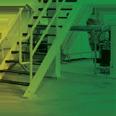


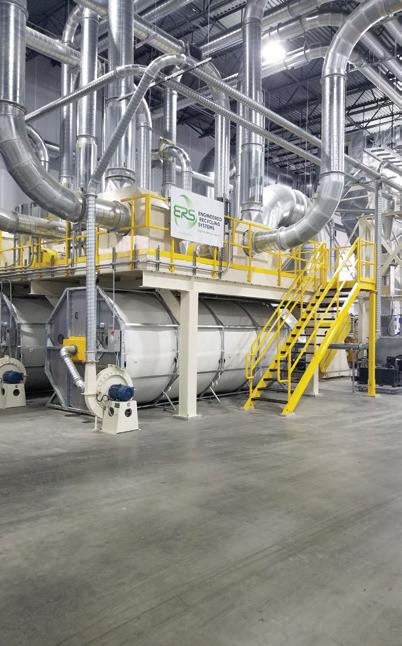
ZEHNDER CLEAN AIR SOLUTIONS
KEVIN ROHRBACH
Head of North America
100 Rittling Blvd. Buffalo, NY 14220
908-200-9486 www.zehnder-cleanairsolutions.com/us
CRAIG BOX CORPORATION
EDDY CRAIG
President 420 I St. S Fort Smith, AR 72913
476-782-6700 www.craigbox.com
INTERNATIONAL PAPER
BRADLEY ELAM
Regional Sales Manager 6400 Poplar Ave. Memphis, TN 38197 614-460-0717 www.internationalpaper.com
PRP
KELLIE GREEN
President 5620 Elmwood Ave. Indianapolis, IN 46203
317-783-3226 www.prpgraphics.com
SALADÍN PACKAGING SRL
EDUARDO SALADÍN
President
Las Américas Free Zone, A7 Plant Santo Domingo, Dominican Republic 849-410-4855 www.saladinig.com
WPR SERVICES
CHRIS HARRIS
CEO
9059 Technology Lane Fishers, IN 46038
317-513-5269 www.wprservices.net
BREAK THE UNCERTAINTY
JASON ALVAREZ
Owner 2018 Lentz Ave. Union, NJ 07083
732-763-2285 www.breakuncertainty.com
INTER-PAPIER NORTH AMERICA INC.
CHRISTINE TSAKTSIRLIS
Sales Manager 58 Florida St. Farmingdale, NY 11735 516-681-9090 www.inter-papier.com
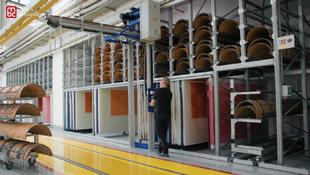
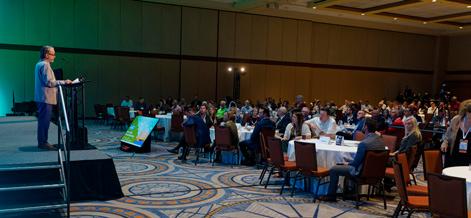
Independent packaging leaders gathered October 6–8 at the Sheraton Grand Riverwalk in Chicago for the AICC 2025 Annual Meeting. With 600 attendees, the event brought together converters, suppliers, and partners for three days of inspiration, education, and connection.
Big-Picture Insights
The meeting opened with Gene Marks, CPA, author, and columnist, who helped members prepare for the road ahead in his keynote, Navigating 2025 and Beyond. Marks emphasized data-driven strategy and practical steps to manage shifting economic and technology landscapes.
The keynote presentation by John O’Leary, bestselling author of On Fire, quickly became one of the most talked-about moments of the meeting. Blending humor, heartfelt storytelling, and even a surprise piano performance, O’Leary inspired members to approach
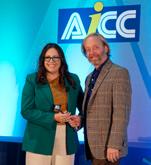

both business and life with gratitude, courage, and a renewed sense of purpose. His message of resilience and leadership resonated deeply, leaving attendees energized and reflective long after the session ended.
Closing out the day, Chad Pregracke, founder of Living Lands & Waters and CNN Hero of the Year, shared how one person’s action can spark wide-reaching change. His keynote challenged members to turn challenges

into opportunities in their businesses and communities.
The closing general session offered two impactful presentations that captured the attention of attendees. Mark Denzler, president and CEO of the Illinois Manufacturers’ Association, delivered the Industry Presentation – The State of Manufacturing, offering an insightful overview of current trends, challenges, and opportunities in the manufacturing sector. He highlighted the vital role manufacturing plays in Illinois and the nation’s economy and emphasized the importance of workforce development, innovation, and policy support to
drive growth. The event concluded with a dynamic closing keynote, titled Generative AI and Your Future, by Sam Richter, Hall of Fame speaker and bestselling author. Richter engaged the audience with an eye-opening and accessible look at how generative AI is reshaping industries, workplaces, and everyday life, urging professionals to adapt and leverage this transformative technology for success in an increasingly digital world.
That
Action Educational sessions provided members with tools to put their ideas into practice.

Over a dozen attendees came to Chicago early to participate in Unlock Financial & Operational Synergy, a two-day seminar led by Mitch Klingher, partner at Klingher Nadler LLP. Klingher also offered guidance on business planning following the passage of the One Big Beautiful Bill Act during the Focus Session. In the same session, Shoshana Micon, manager of recycling and packaging sustainability at the American Forest and Paper Association, provided essential updates on containerboard markets and sustainability policies, and Ryan Fox, market analyst at Green Markets, a Bloomberg company, examined containerboard industry shifts, from acquisitions to capacity changes. Breakouts went deeper. The Supplier Panel Discussion: Latest Developments and Innovations in Digital Print brought together a powerhouse lineup of experts representing leading technology providers—Matthew Condon, business development manager at Domino; Steve Shannon, global sales and business manager at HP; Liz Logue, vice president of strategy and product marketing at EFI; Chuck Slingerland, vice president at Barberan; John Kelley, managing director at Kento; and Tom Green, regional sales manager at Durst—moderated by Greg Tucker, chairman and CEO of Bay Cities. Panelists discussed the latest advancements in digital printing, from automation and color management to hybrid workflows and customization. Their insights gave converters a clear look at where digital print technology is heading—and how it is reshaping productivity and customer expectations. This followed a Digital Print Boxmaker Panel the previous day, featuring Jake Sutherland, chief innovation officer at Sutherland Packaging; George Perreira, vice president of Moyy/Whitebird; Chad Wagner, CEO of Peachtree Packaging, and moderated by Greg Jones, executive vice president of SUN Automation Group. The panelists spoke candidly about the challenges and rewards of adoption.
During the meeting, the International Corrugated Packaging Foundation (ICPF), co-sponsored by AICC and the Fibre Box Association, announced the posthumous induction of Jeffrey Schwarz into ICPF’s prestigious Circle of Distinguished Leaders. A respected industry innovator, Schwarz was instrumental in expanding Schwarz Partners, L.P., strengthening collaboration among independent sheet feeders, and fostering cooperative growth across the corrugated, packaging, and recycling sectors.
Todd Zielinski, CEO and managing director of Athena SWC, and Trent Halasek, sales manager at Akers Packaging, shared strategies for evaluating orders and maximizing sales ROI. The Supplier Innovation sessions, moderated by Jeff Pallini, CEO of Fosber, and Brian Foley, national sales manager of corrugated board at Bobst, introduced AI, automation, and print solutions from JB Machinery, Two10 Technologies, OMP, Nextwire, BW Papersystems, Elitron America, Koenig & Bauer, EFI, Rigorous Technology, HiFlow Solutions, BCM Inks, and WPR Services.
In his session, Working on the Business: Gap Analysis and Strategic Planning to Protect While You Grow, Chris Santomassimo, partner and outside general counsel at OGC Solutions, guided attendees through practical approaches to balancing growth with risk management. He shared how leaders can identify operational gaps, implement safeguards, and align strategic planning with long-term organizational health. Participants walked away with tools to strengthen their business foundations while continuing to scale responsibly.
Roundtable discussions and member exchanges tackled workforce recruitment, safety, and sustainability, ensuring every attendee left with practical takeaways.
Networking was at the heart of the event. Members enjoyed receptions overlooking the Chicago River, a Women in Packaging Social , and the Emerging Leaders Networking Event. AICC Emerging Leaders also enjoyed a training luncheon with Jerry Frisch, president of Wasatch Container.
Plant tours at StandFast Packaging Group, Blackhawk Corrugated, Digital Print Partners, and The Royal Group gave attendees a behind-the-scenes look at innovative operations, while optional cultural outings—from the Art Institute of Chicago to a Second City comedy night—offered time to relax and connect.
The meeting also celebrated industry achievements. The AICC/Board Converting News Innovator of the Year Award was won by Atlas Container in Severn, Maryland, for its Second Chance Program, which provides employment and training opportunities to individuals on work release from local correctional facilities. The program not only helps participants build new skills and stability but has also led many to continue their careers with Atlas after
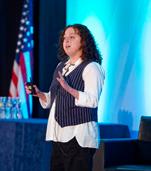

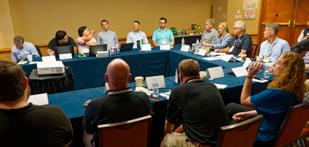






































































































































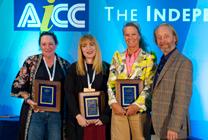
From left: Jana Harris, president of Harris Packaging Corp. and American Carton Co.; Jordan Dawson, sales assistant, customer service representative, purchasing, and Gen 3 at Harris Packaging Corp.; and Kim Nelson, president and CEO of Royal Containers; with Brewer, are thanked for their service on the AICC board of directors.
release, exemplifying innovation through compassion and community impact.
Student Design Competition winners, represented in person by Sydney Doyle, Zoe Tseng, and Luke Kim from Cal Poly, were also celebrated during the meeting, alongside the presentation of the Troll Scholarship to Tyler Kleinsasser of South Dakota School of Mines & Technology (graduate) and Clayton Gons of Rutgers University (undergraduate).
During the Annual Meeting, AICC members, by acclamation, selected
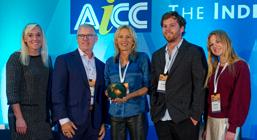
Caitlin Salaverria (far left), president of the International Corrugated Packaging Foundation, announced Jeffery Schwarz’s posthumous induction into ICPF’s Circle of Distinguished Leaders and presented the award to Schwarz Partners Sheet Feeder Manager John Lingle (center left), Jill Schwarz (center), Andrew Schwarz (center right), and Madison Schwarz.
the 2025–2026 slate of officers and directors (see p. 32), marked by the changing of the guard when Gary Brewer, president and CEO of Package Crafters and Creative Packaging, handed over the ceremonial gavel to Terri-Lynn Levesque, vice president of administration at Royal Containers, as the incoming board chair.
The Annual Meeting proved that the independent spirit is strong, adaptable, and future-focused. Attendees returned home with fresh strategies, new connections, and renewed energy to lead their companies forward.

Brewer (left) and Len Prazych (right), president/ publisher and editor-in-chief of Board Converting News, present the Innovator of the Year award to Paul Centenari, CEO of Atlas Container.
AICC is grateful for the support of its members. Join us in thanking the following sponsors:
Platinum Sponsor: Domtar
Gold Sponsor: Flint Group
Silver Sponsor: A.G. Stacker
Bronze Sponsor and Key Card Sponsor: SUN Automation Group
Opening Night Reception Sponsor: Haire Group
Late Night Mix and Mingle Sponsors:
• A.G. Stacker
• Pacificolor
Networking Reception Sponsors:
• BHS Corrugated
• BW Papersystems
• EMBA Machinery
Networking Lunch Sponsor: Kao Collins Inc.
Networking Breakfast Sponsors:
• Oklahoma Interpak
• Mainline Conveyor Systems
Women in Packaging Social Sponsor: BW Papersystems
Bag and Lanyard Sponsor: Stafford Corrugated Products
Badge Sponsor: Geo. M. Martin
Technology Sponsor: Baumer hhs
Mobile App Sponsor: Global Boxmachine
Meeting Signage Sponsor: EFI
Program Guide Sponsor: Lewisburg Patterson Co.
Prints 4,500 sheets per hour at 600dpi. Smallest footprint on the market.















Delivering one of the lowest total costs of ownership on the market $









Consumes up to 50% less ink and energy usage than other single-pass inkjet presses. domino

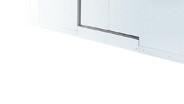




Imagesmaynotincludeoptionalextrasorupgrades.Theinformationcontainedinthisdocumentisnotintendedasasubstituteforundertakingappropriate testingforyourspecifi cuseandcircumstances.NeitherDominoUKLimitednoranyofDomino’sgroupofcompaniesisinanywayliableforanyreliance thatyoumayputonthisdocumentwithregardstothesuitabilityofanyinkforyourparticularapplication.Thisdocumentdoesnotformpartofanyterms andconditionsbetweenyouandDomino,andDomino’sTermsandConditionsofsale,andinparticularthewarrantiesandliabilitiescontainedwithin them, shall apply to any purchase of products by you.
BY RALPH YOUNG
It’s been a few years since our last report on these subjects, so an update seemed appropriate. Think about the recent press releases about a cold corrugator and another corrugator that can digitally print inline. Also, there was an announcement regarding a digital/flexo press with inline rotary die cutting. What are the options for your operation for additional market share or new and better accounts?
By the time you read this, AICC President Mike D’Angelo and I will be back from attending the Fastmarkets International Containerboard Conference (ICC) in October, where AICC participated with Amazon on a panel discussion on e-commerce. We will be back to you with pertinent highlights.
We have written and communicated significantly over many years about both the status of very small-flute corrugated and its growth trend. Countless BoxScore articles (more than 50), AskRalph and AskTom inquiries, webinars, seminars, emails, phone conversations, and faceto-face engagements have encompassed these subjects. We also have taken the message on the road, often appearing at Fastmarkets’ ICCs, Bank of America
investor conferences, training sessions at selected containerboard manufacturers, and with my technical network associates at TAPPI’s Corrugated Board Technical Committee meetings.
Tom Weber and I delivered a three-part webinar on the successful information originally presented at AICC’s 2018 Spring Meeting. Updates from the actual participants were included in the 86-slide Flute vs. Paperboard Workshop, with six industry subject matter experts alongside us. Since, there have been improvements in equipment, adhesive applications, substrates, and process controls.
Recently, escalating paper prices, supply chain constraints, paperboard shortages, shifts in consumer buying habits, and employee shortages gave way for opportunities to investigate microflute corrugated. On a somewhat tangential perspective is Amazon’s reduction in ECT and therefore basis weights—not necessarily a movement to micro- and nanoflutes yet. More of my package deliveries have transitioned from 32 ECT to 26 ECT if not paper bags. It’s more than a matter of rightweighting. You may want to review the company’s 2024 sustainability report and gain your own marketing ideas (see QR code at left).
This movement to nanoflutes—N, G, and O—started around 1995 with Bob Nebeling as the champion at Bobst. More on this history can be found at NOW.AICCbox.org/whitepapers-2. It has now been 30 years since the start here in North America, and this small niche continues to grow somewhat quietly.
First, there were early pioneers and risk takers, then participants, then adopters. Certain parts of the country were more forward in their thinking, primarily the
West Coast, the Midwest, and Texas. Now the movement has spread to most regions of the country.
Just look at the equipment ads, plant articles, and press releases in the weekly issues of Board Converting News by the front-end suppliers to micro- and nanoflute laminators and converters—digital presses, AI controls, more consistent paper properties (i.e., less variation).
Substrates as low as 4-point were available in the late 1990s but have been slow to be adapted except elsewhere, particularity in China. This is especially true in Amazon’s “ships in own package” being rebranded as “ships in product packaging.”
We look forward with excitement to learning more about the structural aspects of double-wall E/E and F/F as they relate to the paperboard grades. Past conversions have also been based on a reduction in costs.
With the acquisition of Verso by Billerud of Sweden a few years ago and the announcement of the conversion of at least one paper machine, one could expect to see an increased domestic supply of lightweight white substrates for corrugated or additional paperboard capacity such as folding boxboard. Hood’s announcement about a capacity expansion at its St. Francisville, Louisiana, mill may include their movement toward lighter-weight natural linerboards.

Ralph Young is the principal of Alternative Paper Solutions and is AICC’s technical advisor. Contact Ralph directly about technical issues that impact our industry at askralph@AICCbox.org

Each JB product optimizes the performance of your operation. But when combined they maximize the performance and profitability of the entire process!
BY TOM WEBER
The best suppliers are engaged on an individual level to build relationships and create benefits for all parties involved, but there is no single right approach to supplier development. The procuring company and supplier will typically choose a strategy that best suits their relationship, supply market, and industries they serve.
Outlined below are just some of the reasons why many more companies are investing in supplier development.
EARN A COMPETITIVE ADVANTAGE
Through educating and mentoring diverse suppliers in their network, companies can partner with vendors that understand every facet of their business, from pricing to quality requirements. This, in turn, empowers the supplier to offer more competitive pricing and services in exchange for a long-term and secure relationship, along with key client access.
ENCOURAGE COLLABORATION
BETWEEN INDIVIDUAL SUPPLIERS
Small, diverse suppliers often lack the resources, skills, or experience to meet complex or demanding business needs. Supplier development programs can encourage small suppliers to work together to offer solutions that they would be unable to provide alone.
COMMUNICATION DRIVES INNOVATION
Encouraging diverse suppliers to work together to develop unique solutions can lead to out-of-the-box thinking and increase innovation. This can result in the
development of products and services not currently available on the market, thus creating an advantage.
CREATE STRONGER LONG-TERM SUPPLIER RELATIONSHIPS
Supplier development requires trust and collaboration. These elements encourage companies to foster long-term relationships with their suppliers, helping them gain the economic and business resources they need for continued growth and success. This can eventually nurture a healthier and more beneficial partnership for all key stakeholders.
RESOLVE PERFORMANCE AND QUALITY ISSUES

better communication, greater efficiencies, and ultimately, higher-quality end products.
Supplier development and relationships should be the primary focus of any organization that works with a diverse supplier base. Better supplier relationships permeate throughout the supply chain, translating to better products and enhanced customer satisfaction for all.
One-on-one interaction with various suppliers offers opportunities for improvement on both sides. For example, the supplier can highlight ways in which the customer can provide support, such as improved communication of requirements or access to specification documents. Conversely, the customer can also highlight areas where the supplier’s service can be improved, which can add value for them with other clients they work with, as well.
While supplier development is aimed at improving the performance of the supplier to the benefit of the purchasing company, personal relationships with the supplier can also have a positive impact on the end customer. Stronger customer-supplier relations can lead to
I encourage all members to reach out to their top 10 suppliers and set up a routine quarterly roundtable meeting to ensure that all parties are achieving their desired goals and objectives. It is imperative these days, with tariffs looming everywhere, to understand your key supply partners’ ever-changing dynamics, as well.
2026 is right around the corner—what a great way to kick it off in a positive way for key stakeholders. Cheers to a great 2026 and beyond. Please consult your Ask Tom or Ask Ralph resources for more details on how we can assist your efforts.

Tom Weber is president of WeberSource LLC and is AICC’s folding carton and rigid box technical advisor. Contact Tom directly at asktom@AICCbox.org.


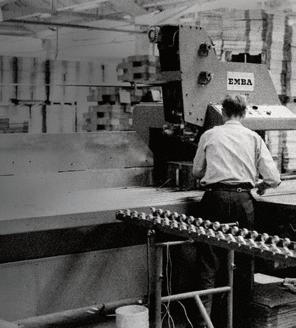


BY TODD M. ZIELINSKI AND LISA BENSON
For corrugated and folding carton packagers with complex sales cycles, building a consistent pipeline of new opportunities is one of the most difficult aspects of business development. Sales teams often juggle too many responsibilities, and without a structured process to support lead generation and qualification, efforts to grow the business stall.
Outsourcing front-end sales functions offers an efficient way to address this issue. It enables your sales team to do the work they were hired to do. In this article, we cover the top 10 reasons packaging manufacturers are turning to outsourced models to support business development.
Most sales professionals spend only a small portion of their time actively selling. The remainder consists of prospecting, clerical work, project coordination, and account management. Typically, only 8%–12% of their time is spent on new business development, despite it being their top priority.
Outsourcing front-end sales activities, such as list development, outbound calling, qualification, and lead nurturing, creates a structure that enables sales staff to focus on closing deals, rather than chasing leads. This
improves productivity and ensures that qualified opportunities move through the pipeline.
There’s a clear difference between managing current accounts and developing new ones. Many corrugated and folding carton packagers expect their salespeople to perform both roles, but few are equally effective in both. Hunting requires persistence, patience, and comfort with outreach and rejection. Farming is relationship-focused and service-oriented.
Farmers who are expected to be hunters often struggle with reaching out to strangers to develop relationships and create opportunities with new accounts. Because reaching out doesn’t come naturally and is often forced, they struggle with being consistent and delivering solid, qualified leads with the appropriate spend levels.
An outsourced front-end team specializes in new business development. Their sole focus is on identifying, engaging, and qualifying prospects. Your closers receive opportunities that fit your profile and are ready for sales engagement.














































3. You Gain a Complete Team Without Adding Overhead
Building this capability internally requires hiring for multiple roles. You’d need researchers, list builders, writers, designers, callers, and more. Add in the cost of software, training, and management, and the investment grows quickly.
Outsourcing provides access to a cross-functional team with the necessary tools, experience, and structure already in place. You can go to market quickly and adjust as needed without the large upfront investment in time and money.
4. Lead Quality Improves, and So Does Your Close Rate
Sales teams lose time on leads that never had a chance. Poor fit, wrong geography, low spend, or mismatched capabilities are common problems. Even a strong salesperson can’t overcome a bad lead.
An outsourced team applies qualification criteria consistently. You get a pipeline filled with companies that match your goals and are prepared to move forward when your team connects with them.
5. Structure and Measurement Replace Guesswork
Many packaging manufacturers rely on informal efforts to generate new business. Lead generation is often treated as a side task rather than a structured process. Without clear ownership, results are inconsistent.
Outsourced models operate within a defined process with key metrics, reporting, and accountability. You gain visibility into pipeline health, lead progression, and conversion. This allows you to make adjustments based on real data.
6. Capacity Can Expand Without Expanding Your Staff
Hiring is time-consuming and expensive. Outsourcing offers a way to boost market
activity without the risks and delays associated with building an internal team. It also offers flexibility. Programs can scale up, scale down, or shift focus based on market conditions or business needs.
This makes outsourcing a smart option for companies entering a new market, supporting a product launch, or working to offset revenue concentration in existing accounts.
Outsourcing front-end sales processes is not a shortcut or temporary fix. Patience is critical. The outsourced model supports long-term growth by enabling you to create a sustainable and repeatable process. Sales teams that are supported with qualified leads and efficient tools are more productive and more successful. Outsourced front-end support can play a key role in helping you meet your revenue goals.
When prospecting is managed informally by a few individuals, the process often lives in their heads or in their personal spreadsheets. If one of those people leaves or retires, you lose valuable context and continuity. That includes contact history, lead quality insights, and timing details.
Outsourcing shifts that knowledge into a shared system. You retain full ownership of data, messaging, and process, and you gain continuity that isn’t dependent on any single person.
9. Follow-Up and Win Rates on Quotes Are Improved
In many organizations, quotes are sent out without a structured plan for follow-up. Salespeople may be managing dozens of opportunities at once, and it’s easy for some to fall through the cracks, especially when no immediate response comes in.
Outsourced teams can track open quotes, follow up at defined intervals, and capture win-loss feedback. This increases your chance of closing deals that would otherwise stall out or go dark.
Every outbound call or email is a touchpoint that can yield insight. Whether it’s feedback on your messaging, objections raised, or competitor information, there’s value in every interaction.
Outsourced teams are trained to collect and report that intelligence, giving you a clearer picture of what the market is responding to. That insight can be used to improve positioning, adjust your approach, and inform strategic decisions.
If your sales team is stretched thin, if your pipeline isn’t aligned with your goals, or if your lead generation feels inconsistent, it may be time to reevaluate the front end of your sales process. Corrugated and folding carton manufacturers that adopt a structured approach, assign the right people to the right roles, and use the right tools to support outreach consistently outperform those that rely on fragmented internal efforts. Outsourcing is one option worth serious consideration.

Todd M. Zielinski is managing director and CEO at Athena SWC LLC. He can be reached at 716-250-5547 or tzielinski@athenaswc.com

Lisa Benson is senior marketing content consultant at Athena SWC LLC. She can be reached at lbenson@athenaswc.com

BY JULIE RICE SUGGS, PH.D., AND ALLI KEIGLEY
Winter’s almost here, and while we’re bundling up in parkas and fuzzy socks, corrugated packaging isn’t so lucky. Cold weather can make sturdy boxes go from strong to brittle faster than you can say “subzero.” Whether you’re shipping holiday gifts or storing supplies in a frosty warehouse, the chill can do a number on corrugated material. But don’t worry—there are plenty of ways to keep your corrugated ready to weather the cold.
In chilly weather, corrugated packaging confronts a triple threat of temperature, humidity, and adhesive-weakening, which can all undermine box integrity during distribution and storage. The material becomes stiffer and more brittle, and adhesives can lose effectiveness, raising risk of delamination or failure under load.
High relative humidity (RH)—common in winter warehousing or cold chain transport—causes the fibers in corrugated to absorb moisture and soften. This significantly reduces stacking strength—often to about 50% of its potential when RH climbs above 85%. Moreover, prolonged storage under load in humid conditions accelerates strength loss; for instance, boxes may lose nearly 45% of their compression strength after 90 days, with humidity amplifying that degradation. Temperature fluctuations, such as moving from heated to unheated zones, can also cause internal condensation or moisture migration, further weakening the board.
Cold weather doesn’t have to crush your corrugated game. Keeping packaging strong in winter starts with climate control: Store and convert corrugated materials in heated areas (above 55
degrees Fahrenheit) to prevent brittleness and adhesive failure. Avoid unconditioned storage spaces, especially near loading docks or drafty zones, where boxes can absorb excess moisture or become frozen.
Applying moisture-resistant coatings, using wet-strength liners, and adding desiccants can also guard against high humidity, which drastically reduces stacking strength. For extra protection, boxes can be engineered with stronger flute profiles or double-walled designs to boost performance in cold-chain logistics.
Corrugated manufacturers play a crucial role in fortifying packaging against winter’s harsh effects. By carefully selecting raw materials and enhancing the board’s construction, they boost moisture resistance and cold tolerance. For example, companies like Smurfit WestRock and International Paper use wet-strength resins and higher-quality fibers to help maintain structural integrity in damp or freezing conditions. Many producers offer specially engineered liners and flute profiles designed to improve stacking strength and durability during cold-chain transport. Additionally, surface coatings and barrier treatments reduce moisture absorption, while tailored adhesive formulas ensure strong bonds even at low temperatures. Through these innovations, corrugated companies help ensure that packaging thrives in the cold.
To ensure that your board is up to the challenge, it’s important to run the right tests. Start with conditioning per ASTM D4332, then follow with edge crush tests, box compression tests, and burst strength tests to evaluate structural integrity. If your
packaging faces extreme cold or fluctuating temperatures, use environmental chambers to simulate freeze-thaw cycles and cold storage conditions, watching how the material reacts over time. For specialized testing support, Clemson University’s Package Dynamics Lab offers advanced facilities and expertise to help you thoroughly evaluate your corrugated materials under real-world environmental conditions.
Winter weather may challenge your corrugated packaging, but with the right strategies and testing in place, you can keep your shipments safe and sound no matter how low the temperature drops. From controlling storage environments to leveraging moisture-resistant materials and thorough testing, you have all the tools you need to beat the cold.
Don’t wait for winter to wreak havoc on your packaging. Take action now: Evaluate your current processes, invest in proper testing, and ensure that your corrugated materials are ready to stand strong through every frost and freeze. Your products—and your customers—will thank you.

Julie Rice Suggs, Ph.D., is academic director at the Packaging School. She can be reached at 330-774-8542 or julie@ packagingschool.com

Alli Keigley, is production coordinator at the Packaging School. She can be reached at alli@packagingschool.com.



BY MATT EICHMANN
Only 6% of Gen Z workers aspire to leadership roles. That’s according to Deloitte’s 2025 Gen Z and Millennial Survey —and it should stop every business owner in their tracks.
For family-run manufacturers and companies in the corrugated industry, the stakes couldn’t be higher. You’ve built businesses that support employees, serve customers you’ve known for generations, and carry a culture you’re proud of. Whether you plan to sell someday or pass the business to family, one truth holds: The next generation must be ready to lead.
The stereotype is that Gen Z is distracted, disengaged, or unwilling to work hard. The reality couldn’t be further from the truth. Deloitte’s research shows that 70% of Gen Z work on skill development weekly or more often, 67% invest their own time outside of work to learn and grow, and they place high value on empathy, communication, and leadership. In other words, they’re not avoiding growth, but they are pursuing it differently. Many have watched leadership modeled as long hours, burnout, and sacrifice without purpose. To them, leadership doesn’t look like opportunity. It looks like giving up too much.
That shift creates a real challenge for smaller manufacturing firms. Workforce development and succession planning are often left for “someday.” But “someday” comes quickly through an unexpected retirement, health issue, or market change that can leave a company scrambling. Without a strong bench of future leaders, businesses risk stalling just when they need momentum most. Gen Z employees, while capable and eager to learn, are signaling less interest in traditional leadership paths. That doesn’t mean they lack
ability; it means they need clarity, coaching, and a reason to step up. Owners who invest in leadership development now secure not just business continuity but also the long-term loyalty of their teams.
The good news is that building that pipeline doesn’t require a massive HR department or elaborate programs. Even small, intentional steps can make a difference. Start by reframing leadership as a path to purpose rather than pressure, showing younger employees that stepping into leadership is about making an impact and serving others, not just logging more hours or taking on stress. Make leadership development part of your culture. Stretch assignments, mentorships, or opportunities to take on new responsibilities signal that growth is possible and valued inside the company.

Investing in coaching is another practical step. Coaching helps emerging leaders build confidence, clarify strengths, and take ownership of their career paths. For companies, it accelerates readiness, reinforces loyalty, and can be highly cost-effective. Equally important is equipping your frontline managers, who shape day-to-day employee experiences. Training them to foster trust, provide clarity, and recognize contributions addresses exactly what Gen Z values most. And finally, start early. Building a leadership bench doesn’t happen overnight.
The sooner you begin, the stronger your pipeline will be when you truly need it. Even if your company never plans to sell, leadership development and succession still matter. Customers count on you for reliability. Employees count on you for stability. Communities count on you for jobs and stewardship. Your legacy is about more than financial results—it’s about endurance. Leadership development and succession aren’t about replacing yourself; they’re about equipping the next generation so the company thrives long after you’ve handed off the reins. Gen Z is your future. If you want your business to endure for customers, employees, and families you’ve known for decades, start building your bench with Gen Z in mind today.

Matt Eichmann is founder of Catalyst Point Leadership Advisors. He can be reached at 614-512-2940 or matt@catalyst-point.com
KemiTM liners, Metsä Board’s premium white top kraftliners, have played a significant role in the evolution of corrugated packaging in the Americas. Known for their superior printing surface and high performance, KemiTM liners are a coated white top kraftliner that revolutionized the corrugated packaging industry by combining performance with visual branding.
KemiTM liners, then known as Kemiart, were launched in the American market in 1991. Innovation continued introducing double coated white kraftliner in 2011. Most recently, in 2023, the Kemi mill underwent further developments to increase its capacity to 465,000 tons, while enhancing energy and water efficiency.
At 465,000 tons, our facility is now the world's largest production plant for coated white-top kraftliner. Customers worldwide specifically request "Kemi" when they mean our first-class white kraftliners such as MetsäBoard Classic WKL, MetsäBoard Pro WKL and MetsäBoard Prime WKL.
With a legacy spanning over five decades, Metsä Board will continue to help set the standard for excellence in packaging, allowing every box to tell a story of quality and sustainability.
Growth, with a future
BY XIAOJING “ KATE” LIU
The University of Wisconsin – Stout (UW-Stout) has a rich history in packaging education. Throughout several generations, the faculty in the UW-Stout packaging program has built the program to be among the top in the world. UW-Stout boasts a 100% employment rate for its graduates with solid starting salaries, highlighting the program’s effectiveness in equipping students for careers in the packaging industry.
The packaging curriculum at UW-Stout has been updated constantly to ensure that students acquire the latest knowledge and skills. Each class features a diverse range of guest speakers and representatives from over 20 companies in the industry, enabling students to learn about current trends and gain valuable insights. The Packaging Advisory Committee comprises 25 packaging experts from various companies, ensuring comprehensive coverage of the diverse aspects of the packaging industry. These experts volunteer to participate in full-day meetings on campus twice a year, maintaining a close connection with the program. They provide constructive feedback on the course curriculum and offer support to both the program and students, thereby promoting healthy, long-term development and a broad vision for the program’s future.
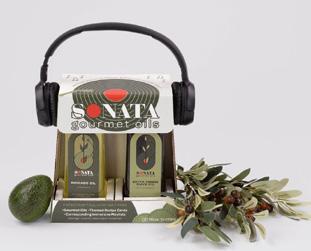
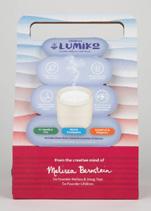
The cooperative education program is a valuable feature at UW-Stout. Students have the opportunity to participate in one or more co-op experiences during their college studies. Almost all the packaging students are involved, either directly or indirectly, in the corrugated paper packaging industry during their
co-ops. Students who work at companies such as Packaging Corp. of America (PCA), Buckeye Corrugated Inc., Great Northern Corp., Green Bay Packaging, Menasha Packaging, and International Paper gain experience to develop practical skills through structured work-integrated learning, and it fosters their commitment to the corrugated and paper industry after graduation.
Each student in the program gains a solid foundation in material science, manufacturing, supply chain management, transportation, food packaging, consumer packaging, and medical device packaging, along with strong design skills and lab testing skills. After exploring their interests, each student selects an emphasis or minor that aligns with their career goals.
A shared focus across the program is sustainability, a challenge that both educational institutions and the industry must address. To prepare students for this, many research and class projects incorporate innovative designs that aim to reduce waste and minimize environmental impact. These designs can be seen in various packaging solutions, including cheese packaging, wine packaging, furniture packaging, personal care product packaging, kitchen appliance packaging, cooking oil packaging, charcuterie board packaging, pet food packaging, and much more.
The program actively engages students in design competitions to enhance hands-on learning and foster creativity. Notable competitions include the
Institute of Packaging Professionals
48-Hour Redesign Competition, the Paper Packaging Alliance student design competition, the Flexible Packaging student design competition, the International Molded Fiber Association student design competition, the Ameristar student design competition, PCA Global, and of course the AICC student design competition, among others.
By participating in these activities, students showcase their creativity and innovation by applying classroom knowledge to solve real-world problems. In the history of the UW-Stout packaging program, we take pride in the numerous awards our students have won in national and international packaging competitions, shining a light on our StoutProud spirit!

Packaging involves collaboration among various disciplines, including marketing, materials science, structural design, engineering, machinery, supply chain management, graphic design, and printing. We recognize the importance of equipping our students with effective communication and teamwork skills.







The Packaging program at UW-Stout welcomes motivated students and is dedicated to providing a high-quality education that helps them secure bright futures in the packaging industry. With the support of industry initiatives like the AICC Emerging Leaders program and the PPC Leadership Summit, we are optimistic that these students will become future leaders who will positively impact the entire industry.

BYLINE

AICC elected its 2025–2026 slate of officers and directors during the AICC Annual Meeting on October 8 in Chicago.
Incoming Chairwoman Terri-Lynn Levesque, vice president of administration at Royal Containers, has chosen the theme Legacy in Action: Inspiring Tomorrow’s Leaders.
“Legacy is often imagined as a statue, a plaque, or a title etched into history. But true legacy isn’t what we leave behind—it’s what we pass forward,” Levesque says. “It lives in the people we mentor, the cultures we shape, and the values we embed in future leaders.
A true leader’s legacy is not measured by what they achieve alone, but by what others accomplish because of them. That truth has never been more urgent than it is today, and it is the heart of my theme as your new chairwoman: Legacy in Action: Inspiring Tomorrow’s Leaders.”
Levesque will focus throughout the year on the responsibility of leaders to invest in mentorship, inclusion, and integrity, ensuring that the next
generation of packaging professionals has the tools and inspiration to succeed.
The Emerging Leaders (ELs) of AICC elected a new delegate to represent the Association’s EL program: Nick Catania of BHS Corrugated–North America.
AICC’s Associate (supplier) members elected Warren Bird of JB Machinery to the Associate board.
AICC’s officers and directors for 2025–2026 are:
Chairwoman: Terri-Lynn Levesque, Royal Containers, Brampton, Ontario, Canada
Immediate Past Chairman: Gary Brewer, Package Crafters, High Point, North Carolina
First Vice Chairman: Joe Morelli, Lewisburg Patterson Company, Decatur, Illinois
Vice Chairmen:
• Mike Schaefer, Tavens Container & Display, Bedford Heights, Ohio
• Eric Elgin, Oklahoma Interpak, Muskogee, Oklahoma
• Josh Sobel, Jamestown Container Cos., Cleveland, Ohio
Chair, Past Chairmen’s Council: Matt Davis, Packaging Express, Colorado Springs, Colorado
Advisors to the Chairwoman:
• Joe Palmeri, Jamestown Container Cos., Macedonia, Ohio
• Al Hoodwin, Michigan City Paper Box, Michigan City, Indiana
• Jeff Dietz, KBA America, Dallas, Texas
EL Delegates:
• Evan Clary, JS Machine, Hunt Valley, Maryland
• Cody Brant, AG Stacker, Weyers Cave, Virginia
• Nick Catania, BHS Corrugated–North America, Aurora, Illinois
Directors:
• Great Lakes: Brock Welch, Welch Packaging, Elkhart, Indiana
• Midwest: Cassie Malone, Corrugated Supplies Co., Bedford Park, Illinois
• Northeast: Larry Grossbard, President Container, Wood Ridge, New Jersey
• Southeast: Chad Wagner, Peachtree Packaging & Display, Lawrenceville, Georgia
• Southwest: Jordan Dawson, Harris Packaging, Haltom City, Texas
• West: Sahar Mehrabzadeh-Garcia, Bay Cities, Pico Rivera, California (interim)
Director, AICC Canada: George Perreira, Moyy/Whitebird, Hamilton, Ontario, Canada
Director, AICC Mé xico: Jorge Ortega, Solemsa, Hermosillo, Sonora, Mexico
Overseas Director: Greg Jones, SUN Automation Group, Glen Arm, Maryland
Directors at Large:
• Jenise Cox, Harris Packaging, Haltom City, Texas
• Sahar Mehrabzadeh-Garcia, Bay Cities, Pico Rivera, California
• Casey Shaw, Batavia Container, Batavia, Illinois
• Stuart Fenkel, McLean Packaging, Pennsauken Township, New Jersey
• Jack Fiterman, Liberty Diversified, Minneapolis, Minnesota
Associate Board:
• Chairman, Associates: Jeff Dietz, KBA America, Dallas, Texas
• Vice Chairman, Associates: Mike Butler, Domtar, Fort Mill, South Carolina
• Secretary, Associates: Brian Foley, Bobst, Phoenix, Arizona
• Director, Associates: Warren Bird, JB Machinery, Westport, Connecticut
• Immediate Past Chair: John Burgess, Pamarco, Roselle Park, New Jersey
AICC President: Michael M. D’Angelo
Secretary/General Counsel: David Goch, Webster, Chamberlain & Bean
Administrator, AICC Canada: Leah Gardiner
Administrator, AICC México: Veronica Reyes
Learn more about AICC’s leadership at www.AICCbox.org.


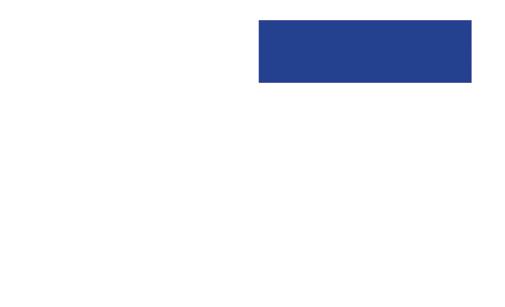
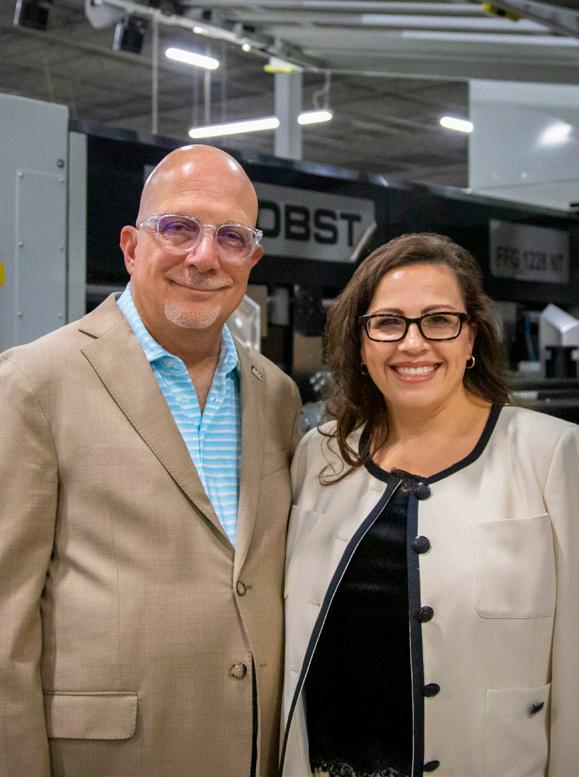

BY ROBERT BITTNER
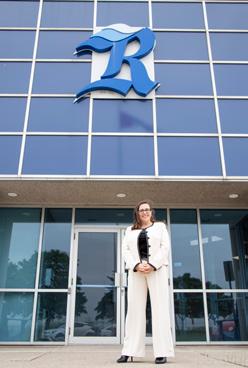
When she was 16, Terri-Lynn Levesque was given a choice: Get a summer job babysitting, or work in the box plant where her mother worked. “The idea of working with machines in humid conditions, getting paper cuts, and running around the shop floor didn’t exactly sound glamorous,” Levesque recalls. “But, like most teenagers, the thought of earning money appealed to me. So, I chose Royal Containers.”
And, with her mother’s encouragement, she stayed, returning to Royal each summer during her school break.
“Those summers were transformative. I worked on everything from the Vicki rotary die cutter, coldand hot-set gluers, the taper, the stitching machine, catching on the tail end of anywhere I was needed and running the coater,” she says. “A day’s work was not done until the little things were complete, like keeping the shop floor clean to my mom’s standards.”
In the process, Levesque learned to be adaptable and teachable. “Most importantly,” she adds, “I learned the value of hard work.”
She also learned the box business. Today Levesque is vice president of administration at Brampton, Ontario-based Royal Containers Ltd., where she has turned that summer job into a 27-year career. In 2026, she will draw on those years of experience for her new responsibilities as AICC’s board chairwoman, the first graduate of AICC’s Emerging Leader (EL) program to step into the role.

The box industry was not on Levesque’s mind as a child growing up in Newfoundland, Canada. Her father, Gary, worked in road construction and paving. Her mother, Lynn, worked in the restaurant industry. Then, at the age of 7, Terri-Lynn moved with her parents and younger sister to Brampton.
The move afforded her mother the opportunity to explore a new career path with Royal Containers. “She could work the midnight shift, coming home just
before it was time to get us ready to go to school,” Levesque says. “While we were there, she would sleep and get caught up on errands and whatever else she needed to do. She would go to work at Royal just as we were coming home from school.”
Eventually, Levesque had two younger sisters. With 14 years separating TerriLynn and her youngest sibling, she found herself naturally playing both big sister and educator. “When I was playing with my sisters or friends, I was always a teacher reading books to them,” she says.
It was the first sign that she might grow up to be a teacher. She had had some great examples. “I had some inspiring teachers during those formative years in elementary school and some great teacher-mentors in high school,” Levesque remembers.
Still, her desire to teach went beyond having influential role models. “My parents instilled in me the importance of serving others,” she adds. “And to me, a teacher is one of the most selfless jobs you could have. You’re helping students, fostering a positive learning environment, and training future leaders—whether they’re going to be the next prime minister or president, factory workers, or teachers themselves.”
That passion for service already was on display in her work at Royal Containers, where she says she became a “yes” person after graduating from high school, taking on whatever jobs the company required. The experience led Levesque to take a year off from school to really figure out the path forward for her career and her life. It was at that point that Royal Containers President Kim Nelson, recognizing Levesque’s willingness to contribute where needed, came to her with a proposal.
“She told me that if I’d go to school and take classes that could help me build a career with Royal and benefit the company, Royal would pay for my schooling,” Levesque says. “So I thought, ‘Why would I go to university to become a teacher and come out with $80,000 in debt when I’m already at this company, I know the people, and obviously there’s room for growth?’ I mean, my mom had already worked there for years; she only just retired this past December after 35 years. I knew the company would be around a long time.”
Twenty-seven years later, Levesque notes that her time at Royal has given her ample opportunities to teach, mentor, and serve others. “Just because I’m not
teaching in a school doesn’t mean that I’m not helping and being of service here as well,” she says.
An Emerging Leader
Levesque’s passion for teaching and mentoring has carried over to her involvement with AICC. She was introduced to the Association in 2015 when she attended her first meeting with Nelson in Fort Worth, Texas. There she met then-AICC President Steve Young and Director of
Membership and Marketing Virginia Humphrey, who told her about the EL program. “Because of my interest in professional development and wanting to learn more about the industry, they thought I would be great for it,” Levesque recalls. “I discussed it with Kim, and she enrolled me within a couple of weeks.”
Being an EL delegate opened new doors. “I think the most memorable part of the experience is the network I was able to build and the many friendships
“AI is the hot topic right now. It’s going to change everybody’s business. We need to be thinking about how that may affect our industry as a whole. We need to be asking how we get ahead of that.”
I made,” Levesque says. “It all started in those first Emerging Leader classes. Having a diverse network of peers in a similar age bracket to myself definitely helped build my network and helped me to better understand the industry.”
Soon after graduating from the EL program in 2018, Levesque was invited to step into the role of international director with AICC Canada, having joined the AICC Canada board two years earlier. Since then, she has sat on several committees, including education and the convention content committee, which she chaired. She has contributed to courses for AICC’s online-education platform. And she continues to be an advocate for the EL program, for which she recently participated in a spring webinar highlighting C-suite leaders.
Along with building a career and deepening her involvement with AICC,
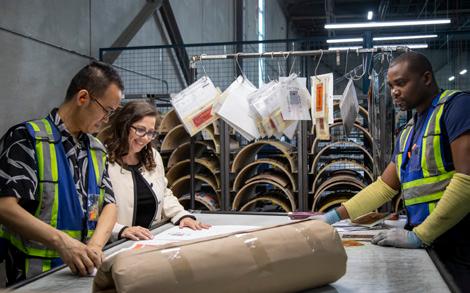
“It all started in those first Emerging Leader classes. Having a diverse network of peers in a similar age bracket to myself definitely helped build my network and helped me to better understand the industry.”
Levesque has built a life in Brampton with her husband, Cory, and daughters Kylie and Sophie. Cory is a forming specialist with Owens-Illinois, a U.S.-based glass manufacturer. Kylie
recently graduated from college with a diploma in photography, while Sophie is a junior in high school, “trying to figure out what she wants to do,” Levesque says. “I think her ideal career changes
every week, but she has lots of time to explore her options. Right now, she’s either going to go into police forensics or become an English teacher!”
Free time is spent enjoying a beachside trailer in northern Ontario, pursuing photography, spending time with her family and their dog, and traveling for AICC.
Legacy and Leadership
Levesque has chosen Legacy in Action: Inspiring Tomorrow’s Leaders as the guiding theme for her year as AICC chairwoman, focusing on honoring the foundation established by past leaders while developing next-generation leaders

equipped to guide a changing industry. It involves exploring ways to combine the new skills and fresh insights that each new generation brings to the table with the best practices and work ethics that have given the industry its longevity. It is this dynamic combination of legacy and innovation that will help to take the industry through whatever changes may come.
Levesque expects that many of the current industry challenges will continue through 2026, including volatility in tariffs and international trade, supply chain constraints, consolidation, and recruitment and retention. The latter two are particularly vital for the industry’s future.
“AI is the hot topic right now,” Levesque says. “It’s going to change everybody’s business. We need to be thinking about how that may affect our industry as a whole. We need to be
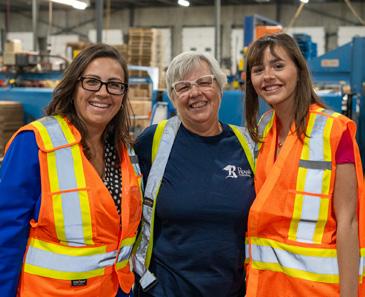
asking how we get ahead of that. And there’s nobody better to teach us about AI than the younger generation, who use it every day. Along those same lines, there are companies in our industry that
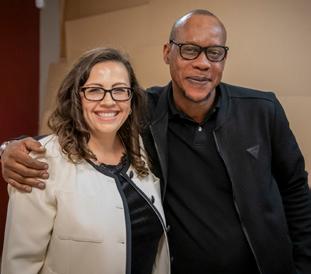
don’t even have an up-to-date website or a social media presence. Who better to help with those things than somebody from Gen Y?”
How companies train and mentor these younger workers is a significant aspect of leadership, Levesque believes; she is convinced that a leader’s true legacy is reflected in the achievements of those who follow in their footsteps.
Levesque is equally convinced that AICC is an association characterized by the kinds of leaders—and potential leaders—who are well positioned to guide the industry through the challenges of 2026 and beyond. She is looking forward to participating in that journey as AICC chairwoman: “I’d like to know that 27 years from now, when I am happily retired at the age of 72, the groundwork laid by my generation will be the next foundation for this industry—and that AICC is still thriving, still growing.”

Robert Bittner is a Michigan-based freelance journalist and frequent BoxScore contributor.
The biggest boxmaker innovations these days start with the people
BY M. DIANE M c CORMICK

In business, the word “innovation” usually conjures images of machines and processes that solve a problem or create efficiencies.
But people are at the core of quality boxmaking, and the nominees for the 2025 AICC & Board Converting News Innovator of the Year put people first. Their breakthroughs build human capital by instilling leadership skills throughout their plants and offices. This year’s nominees are:
• Atlas Container: State Work Release Program fills jobs and gives inmates a second chance.
• Coastal Container: A one-page plan focuses managers on professional growth and company goals.
• Liberty Diversified International: A carefully crafted program cultivates frontline leadership.
In a market where labor is scarce but prisons are full, Atlas Container cultivates
a steady source of reliable talent by giving state inmates a second chance. “It’s so hard to get good people,” says CEO Paul Centenari. “These are good people.”
The Work Release Program from the Maryland Department of Public Safety and Correctional Services supports inmates in the transition from incarceration to employment. Participants work during the day and return to prison at night. Under eligibility criteria, they are within 18 months of completing their sentences, meet education or

employment readiness standards, have good disciplinary records, and face no other charges.
Atlas Container ran a second-chance program prepandemic and returned to the idea in 2021, suggested by HR Director Rose Lis as the COVID-19 pandemic propelled rising demand for corrugated boxes. Today, about eight to 12 inmates from the Dorsey Run Correctional Facility belong to the 260-person Atlas team.
While correctional and case management staff track participants with on-site
“When you get a good group of people who do good things, good things lead to growth, and growth leads to more investment.”
—Paul Centenari, CEO, Atlas Container
checks and calls, Atlas provides the same training that all employees receive. Those who successfully complete the program are hired. “They treated me like a human instead of an inmate,” an Atlas second-chance hire told The Baltimore Sun
The second-chance participants are quality hires whose respectable retention rates—six or seven people out of every 10 hired—near those of their immigrant co-workers and outpace other American-born hires, Centenari says. “They appreciate it,” he says. “They’re gracious. They work hard. They want to get a good start. They know when they get out of prison, it’s hard to get a job, unfortunately. It’s kind of a gold mine. I also like the idea that we’re helping them.”
Atlas requests nonviolent offenders, who are interviewed by Lis and, if hired, must follow the rules of employment, “just like anybody else,” says Centenari.
Although some don’t work out, perhaps leaving campus or breaking program rules about phone usage, most are “serious and no-nonsense. They want to learn. They want to work. They’re good listeners.”
So many fare well that Centenari doesn’t know “who’s in the program and who isn’t, unless somebody told me. Sometimes, I just forget, because they’re out there doing what they have to do.”
When full-time hires don’t succeed, transportation is usually the culprit, so Centenari is talking with a rental-car company about car or van service—which would be offered to all employees—and vehicle rent-to-own options.
Maryland’s Work Release Program takes risks on people, but Centenari calls it a “smart, brilliant move” that addresses two problems. The state reduces recidivism rates, while employers find people to fill their jobs and achieve strategic goals.
“When you get a good group of people who do good things, good things lead to growth, and growth leads to more investment,” he says. “It’s an epic find. It’s an opportunity to find Americans who want to work.”
People-focused innovations support AICC-member boxmakers and the industry by backfilling “the dearth of workers who want to work in a box plant,” Centenari says. “It’s hard to find people as it is, let alone in a box plant in the summer. This is an outlet to bring in people.”
Plus, second-chance workers “show up every day.”
“It’s a much better situation than the prison they have to return to at night,” he says. “I hope this opens everybody’s eyes and ears and minds and hearts to hiring people that have this disadvantage, because it’ll definitely be advantageous to the organization.”
Coastal Container innovates through strategic use of a humble spreadsheet. With every color-coded block, Coastal Container’s one-page plan aligns the quarterly output of each senior manager with the strategic plan’s pillars of vision, assessment, strategy, and quarterly planning.
“If we are innovative, it creates that gravity of connectivity.”
—Nathan Hoekstra, vice president and general manager, Coastal Container
“It’s taking a simple thing that everyone has, Excel, and creating a vivid treasure map of how to run a successful business,” says Vice President and General Manager Nathan Hoekstra.
The origins of Coastal Container’s one-page plan date to 2014, when Coastal Container Owner Brent Patterson envisioned growth led by process. Moving away from the mindset of sales-driven operations, he built a management team for his West Michigan-based company that is rooted in collective collaboration. Strategic planning took center stage, but to make it viable, Patterson and the Coastal team developed the plan as an elegant and intricate use of Excel to spin the 12- to 18-month strategic plan into five individualized goals for each member of senior management to accomplish quarterly.
For each manager, the plan answers the question, “What do I do now?” says Hoekstra. “When you’re achievement-based and you’re winning, that provides motivation. It’s simple and complex. The plan has details of everything you need to do in your job. In the fire of a day, in the emotions of a bad week, in the context of a mega-crisis like COVID or tariffs, the one-page plan allows us to have not only direction but common direction.”
With its stoplight-coded blocks for each action step—green for on track, yellow for overcoming hurdles, red for “This is stuck. I need help.”—the plan serves as the basis for each manager’s development reviews.
The one-page plan surfaces strengths and areas of improvement, pairing them with the resources each leader needs to
make progress toward the key indicators of sustainability in people, product, and prosperity. By putting professional development in the hands of individuals, the plan is a primary element in Coastal Container’s turnover rate of less than 4%.
The one-page plan instills comprehension of the science of business—those absolutes constrained by the laws of physics, finance, engineering, and mathematics. By following the plan, company leaders and their teams use their 2,080 yearly work hours to make progress toward strategic goals while making room for the art of business—the creative thinking that yields innovations and growth.
Continuous improvement is a cultural touchstone of Coastal Container, ingrained in every job description and backed by extensive learning resources, including a people center planned for the company’s next expansion.
“To be a sustainable organization, we need to evolve,” says Hoekstra. “From operators to office, and die room to design, there’s an evolution of all our folks that ultimately rolls back to the section of the one-page plan that answers the question, ‘Do you want to be here?’”
The system has fostered a shared language around managing the business process and “executing on our brand and promise and purpose,” says Hoekstra. The one-page plan template serves as a living document expressing the values that Coastal Container promises and delivers.
In a commoditized industry where businesses worldwide share common denominators in materials and processes, innovation is the differentiator that yields success. Achieving it means being good
stewards for the interests of the owner, employees, suppliers, customers, and community. “If we are innovative, it creates that gravity of connectivity,” says Hoekstra. “We want people to want to do business with us versus selling them on a product that we manufacture. That is a subtle but intentional paradigm of how we have our business set up, and you do that through innovation.”
Across Liberty Diversified International (LDI) and its 1,900 employees, about 85 frontline leaders supervise almost 1,200 people in hourly production.
“The frontline leader is a really impactful role,” says Chief HR Officer Jennifer Swanson. “They oversee so many employees in our workforce that you can make a pretty big impact by elevating their skills.”
LDI committed to developing frontline leaders as part of a five-year strategic plan launched in fall 2023. Lead the Line emerged as the third leg of a threepart strategy that also delineates the expectations and critical competencies needed in frontline leaders and formalizes onboarding for people new to the role.
“Oftentimes, you’ll promote people that are good technical operators into those frontline leader roles, but you have to make sure they have the right leadership skills and capabilities,” says Swanson.
Lead the Line is a yearlong program spooling out across six bimonthly modules teaching key capabilities—the role of a leader, performance management, engaging the team, planning and time management, data and decision-making, and creating a safe work environment.
The program “fits squarely” into the LDI strategic plan’s pillar of talent and culture, says Swanson. Her HR team joined a multidisciplinary mix including plant leaders and supervisors to develop the curriculum. “Building the curriculum internally is probably a little more
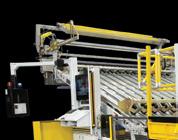
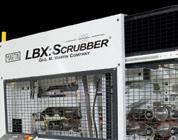
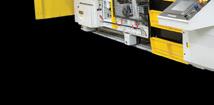
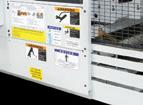
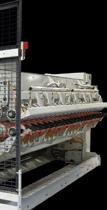







“Innovation in the talent space is equally as important as innovation in machines or in processes.”
—Jennifer Swanson, chief HR officer, Liberty Diversified International
uncommon these days, but we felt so passionate about knowing the content and how it needed to resonate with our people,” she says.
All frontline leaders were enrolled in Lead the Line, whether new or in their posts for 10 years. Data points informing program design came from life cycle surveys pulsing employees at different stages of their careers and in exit interviews. Results revealed the critical role in retention of the relationships between employees and their direct supervisors. “It gave us a big opportunity to impact 1,200 employees by ensuring that we got the right 85 leaders who are trained and developed to be successful,” Swanson says.
Senior leadership played a key role in communication to frontline leaders regarding the benefits of the program. Frontline leaders were shown why and how the program would help them become better leaders before it began.
The program was developed over about 18 months, and the first module was offered in March.
Trainers include internal HR specialists, subject-matter experts, and senior leaders delivering practical lessons and examples of applying Lead the Line concepts in their daily work. “Storytelling is very effective, and people find it’s meaningful for them,” says Swanson.
Modules are 90 minutes long, minimizing participants’ time away from the floor and leveraging the tendency of people to learn in shorter, bite-sized segments. Virtual sessions, offered around plant schedules, have helped keep participation high.
Managers are told the content of each module and given questions to ask their frontline leaders to reinforce the lessons and how they apply them, “because we know that is a big hurdle, getting them from absorbing the training to very
quickly put it into action,” says Swanson. “If we can make that happen, it will be more successful.”
Feedback from participants after each module elicits ideas for improvements. Homework assignments added after the first module now help participants implement their training rapidly.
In their feedback, 100% of frontline leaders said the program is preparing them to be better leaders and allow them to focus on their development. Managers are reporting better communications, more consistent use of shift huddles, and better problem-solving.
One manager reported boosts in productivity, communications, and alignment with business objectives, fostered by frontline leaders who are improving at performance management, engaging their teams, and setting clear expectations and goals.
Innovations matter because the packaging industry “faces constant change,” and LDI’s talent provides the company’s competitive edge, says Swanson. “Customer demands and workforce expectations have changed a lot, especially postCOVID. Operational pressures keep increasing. From my perspective in HR, innovation in the talent space is equally as important as innovation in machines or in processes.”
While generating advancements in production, Lead the Line is preparing the next generation of LDI leaders. “We talk about how you connect with your people, how you give feedback, and how you coach,” says Swanson. “Those are critical skills in every level of leadership, so I absolutely believe this will help us grow future leaders of tomorrow in our company.”

M. Diane McCormick is a Pennsylvania-based freelance journalist and a frequent BoxScore contributor.


A weekly update on benefits and upcoming events for AICC members.
New hosts. More Great Stories.
Hear compelling conversations with successful entrepreneurs released on the first Monday of the month.
Your Association forges forward after yet another strong year

The year following AICC’s 50th anniversary was always going to be a tough act to follow. Fortunately, thanks to the engagement of AICC’s membership, your Association continues to lead and flourish.
AICC closed the fiscal year 2025 in a strong financial position with many new and exciting programs launched and with an eye squarely on the future.
Meetings and Events National and regional summit meetings, golf events, and a ski event mark the AICC calendar throughout the year. Events such as these keep AICC close to its members and provide a multitude of education, recreation, and networking opportunities for members.
The calendar opened with the Midwest Golf Outing in St. Charles, Illinois, in July 2024, which remains one of the most popular events on the AICC calendar. It is held for the great cause of funding college scholarships for members’ children.
There was a Northeast Summit in Atlantic City, New Jersey, in August, which
combines content and golf and draws members from New England to the Carolinas.
The Fall 2024 Annual Meeting occurred at the Orange County Convention Center in Orlando, Florida, last September at the latest edition of SuperCorrExpo. The only corrugated trade show in the Western Hemisphere, a joint production of AICC and the Technical Association of the Pulp & Paper Industry (TAPPI), lived up to expectations, displaying the latest in technology, services, and knowledge. Nearly 3,500 attendees saw the latest in technology and solutions.
AICC Canada held its 2024 Fall Members Meeting in Toronto last October at the famed Woodbine Racetrack.
AICC México held its 2024 Annual Meeting and Trade Fair in Querétaro, Mexico, last October at the Grand Fiesta Americana Hotel. The event brought together the fast-growing membership there in another successful meeting.
In February, AICC members went to Montana for the AICC West Coast Ski Meeting, the first big meeting of 2025.
The slopes of Big Sky were the backdrop for three days of networking and fun.
AICC’s 2025 Spring Meeting in Bonita Springs, Florida, was a rousing success. More and more members are bringing their children to the Spring Meeting, and AICC launched a Kids in Corrugated program to expose the next generation of membership to the creativity that can be found in paper-based packaging.
As the fiscal year drew to a close, the Southeast Summit in Atlanta brought a members program to Peachtree Packaging and to the TPC Sugarloaf golf course.
AICC’s Emerging Leaders (ELs) had their annual field trip in mid-June in Canada. Hosted by incoming AICC Chairwoman Terri-Lynn Levesque and Royal Containers, the group visited box plants, cruised Lake Ontario, and learned from industry professionals while taking in all that cosmopolitan Toronto has to offer. Activities were capped by the AICC Canada Golf Outing, held in conjunction with the Canadian Corrugated Case Association.
AICC is thankful for all the members that make these events anticipated and

successful year in and year out—from those that open their doors for plant tours, to the subject matter experts and speakers who share so openly, to those who attend and eagerly consume AICC in-person programming. AICC thanks the many Associate member companies whose generous sponsorship makes all these events possible.
AICCNOW (NOW.AICCbox.org ) was launched two years ago to better organize and present AICC’s complete archive of webinars, white papers, and member reference materials. AICCNOW also hosts AICC’s Packaging University. This is and should be the AICC member go-to for a variety of topics and self-help materials.
Fiscal year 2025 saw the launch of AICC’s Packaging University as a true university in terms of organization and courses of study. Packaging University now offers courses in the following colleges:
• College of Customer Service
• College of Design
• College of Finance
• College of Human Resources
• College of Leadership
• College of Maintenance
• College of Process Improvement
• College of Production
• College of Sales
• College of Warehousing and Logistics
Online education is a member benefit available to every individual who works for an AICC member company. As of August 1, Packaging University has seen AICC members complete over 26,000 courses since spring 2017. AICC’s education team creates new online courses regularly as well as translates existing and new courses into Spanish, of which there are now 32 across all colleges.
AICC thanks its long-partnering Education Investors: Fosber, BCM Inks, SUN Automation Group, JB Machinery, Pamarco, Absolute, Printron, EFI, Krueger, Bobst, HP, and Stafford Corrugated Products. These Associate members have committed financial and intellectual resources to ensure the continuing education of their fellow AICC members.
AICC’s Breaking Down Boxes podcast continued to educate and entertain members. Aside from the summer hiatus and reruns, AICC brings new Breaking Down Boxes episodes on the first Monday of each month. It is fascinating to hear guests talk about their unique journeys in this wonderful industry. No two are alike.
AICC continues to host education opportunities for other associations through “microsites,” as we maintain relationships with the National Wooden Pallet & Container Association (NWPCA) and Asociación de Corrugadores del Caribe, Centro y Sur América (ACCCSA).
We added an amazing new member to the AICC staff, Rebecca Rendon, senior manager of education, in October 2024. Rendon knows many AICC members from her years on the supplier side of the business. She is also a graduate of the EL program, the first AICC staff member to come from an AICC program. She has already had a dynamic effect on AICC education. We expect more from her in the future.
Launched in fall 2020, the Foundation for Packaging Education is a 501(c)(3) education foundation whose mission is to ensure funding to sustain AICC’s and other entities’ paper packaging education programming. These funds are generously donated for the benefit of existing workers in the paper-based packaging industries, especially AICC members. The donor count has risen to more than 50 pledging companies and individuals. Total funds on hand have risen to over $3 million, and the foundation’s board of directors is actively funding projects.
In 2025, monies have been designated for scholarships for AICC’s Next Gen program, Business Management Certificate Program, and to fund support by third-party contractors to sustain AICC’s learning management system. Please visit www. packaginged.org or scan the QR code on p. 64 to make a pledge. Your pledge will help the foundation sustain its mission. You will be investing in your company’s future.
The foundation administers two scholarships, AICC’s longstanding Dick Troll Memorial Scholarship and the Steve Narva Memorial Scholarship, which are funded by designated pledges from several donor companies.
The Foundation for Packaging Education thanks and values all its donors that support the future of the education of the independent through their generous pledges.
Since all AICC publications are available only in digital format, AICC’s publications and media past and present are now found at the previously mentioned AICC NOW site. Included are surveys, white papers, Ask the Expert content, past and current issues of BoxScore, all webinars, and so much more. AICC is currently working on making some of this content more “live” through virtual interaction. Stay tuned.
remains the flagship publication of AICC. Produced six times a year, the content is always relevant and generated primarily by members. Articles about member companies and articles about the issues that affect the independent, for the good and bad, are the mainstay of this publication. The January/February issue is The Big Associate Issue, dedicated to AICC’s Associate member companies in good standing. Each interested company receives one page of editorial copy for them to speak about themselves. The issue also serves as a de facto buyers guide.
You can access the AICC Media Guide at www.AICCbox.org to see all the ways to get your message in front of fellow members.
AICC continues to follow a destination model, which drives all programming. AICC’s board of directors sets strategic goals for the year. AICC’s standing committees—Convention Content; Membership; Education; Government Affairs; Paperboard Regulations and Sheet Supply; Nominating; Innovation and Technology; and Associate Member— translate the strategic goals into effective deliverables and programming. Each committee is chaired by a member of the AICC board of directors, ensuring
there is connectivity and accountability both ways. AICC staff execute to achieve the deliverables and programming as identified by the committees. Operating in this manner ensures transparency. AICC reports progress to the board at the half-year and year-end. There is also monthly reporting on financial and member participation objectives. This model also keeps AICC programming relevant to members’ needs and provides the ability to evolve as members evolve. Committee membership and board of directors participation is open to any AICC member. Please consider signing on to the future of your Association by serving. You can do so by contacting any AICC staff member.
AICC maintains close ties with fellow industry associations such as the Fibre Box Association; TAPPI, with which AICC shares co-ownership in SuperCorrExpo (Orlando, Florida, in fall 2028) and Corrugated Week (Fort Worth, Texas, in fall 2026); and the American Forest & Paper Association (AF&PA). These entities together with AICC also make up the Corrugated Packaging Alliance.
Internationally, AICC is a member of the International Corrugated Case Association. AICC maintains relationships with the Sheet Plant Association in the United Kingdom, the European Federation
of Corrugated Board Manufacturers, and the previously mentioned South and Central American entity ACCCSA, as well as the NWPCA. AICC management and staff endeavor to represent member interests at various events throughout the year, and they feed important information back to membership.
AICC’s footprint includes AICC México and AICC Canada. Members in both countries have access to all AICCgenerated programming and also receive unique member benefits, events, and information locally. Both organizations are represented on the AICC board of directors. AICC staff and management participate in many member events both south and north of the U.S. border.
AICC also represents its members through participation with several organizations that inform and engage with various government entities at the state and federal level. Among these are the Small Business Legislative Council, where AICC holds a seat on the board of directors; and the Council of Manufacturing Associations, which is a division of the National Association of Manufacturers. Issues relating to paper and paper-based packaging are borne by the AF&PA, which is active in both Washington, D.C., and in state capitals around the country.
AICC was active in several campaigns in 2025 that saw success, such as delaying the introduction of the Corporate Transparency Act, the expansion of 529 plans to cover trade school participation, the continuity of the 199A
deduction for S-Corporations, and 100% first-year deductibility to encourage capital investment.
AICC’s members continue to renew at rates higher than typical in the greater association community, once again at a 94% rate. We take this as proof that the destination model aligns well with member aspirations. At the close of the fiscal year, AICC had 514 members in the United States, Canada, and Mexico, with general (boxmaker) members totaling 295 and Associate (supplier) members totaling 219.
AICC completed its fiscal year in extremely strong financial shape. AICC’s cash, short-term investment, and long-term investment accounts are all strong. Dues revenue covered AICC’s administrative expenses as called for in the destination model objectives. AICC programs covered their costs as planned.
Total revenue was better than budget by nearly $140,000, primarily due to strong meeting attendance and administrative revenue. On the expense side, administrative, member, and education expenses came in less than budgeted. Higher-thanbudgeted meeting expenses were offset by the higher meeting revenue.
The resulting ordinary (operating) income was better than budget by nearly $215,000. This is the income directly attributable to AICC operations. Below
the line, other (nonoperating) income and expenses netted to approximately $190,000, which is $490,000 less than the budgeted amount of $682,000.
Please note the amount on the other income line. Fiscal year 2025 includes the SuperCorrExpo, held in September 2024. This line contains the SuperCorrExpo result along with realized and unrealized gain and loss. SuperCorrExpo income was $886,000 compared to a budget of $700,000. This and investment performance brought in over $500,000 more other income compared to budget.
AICC’s board of directors at its spring 2025 meeting approved the transfer from AICC of $990,000 to the Foundation for Packaging Education. This transfer was not budgeted and is the reason for the other expense line being unfavorable compared to budget by a like amount. This resulted in the net income of $409,000, which unfavorably compared to the budgeted result of $685,000. Had the money not been transferred to the foundation, the bottom-line net result would have been approximately $1.4 million. Regardless of how it is stated, fiscal year 2025 was a strong financial performance for AICC.
AICC has an independent auditor, Mullins PC of Bethesda, Maryland, review its results each year. At the time of deadline for this publication, the audit had not yet been completed. The financial information presented here is derived from AICC’s June 2025 financial statement, compiled by AICC’s independent accounting firm, Sikich LLP.
Once audited numbers are received, they are presented to both the AICC Budget Committee and AICC board of directors for review and approval. All AICC activities are fully transparent to the board and to members. Members that wish to receive AICC’s audited financial statements should contact AICC President Mike D’Angelo at mdangelo@aiccbox.org
When you invest and engage, AICC delivers success.

AICC has released the 14th edition of the 2025 Independent Packaging Association Sales Compensation Report. Based on a survey conducted earlier this year, this is the most up-to-date look at salaries, incentives, and benefits being offered to sales professionals at independent corrugator plants and sheet plants in the United States.
With detailed breakdowns by plant type, plant size, and region, this key benchmarking report offers a comprehensive look at how companies are compensating their sales teams. This report offers the data AICC members need to make informed decisions and stay ahead of the competition. It is a must-have tool for any member looking to review their sales compensation policies and procedures, helping to ensure that their compensation strategies remain competitive and effective.
Beyond compensation, this report also explores crucial operational details that directly impact your sales team’s success. It examines what products and services are typically being sold, how the sales staff typically allocate their time, and how sales objectives are determined. There are also valuable insights into how technology is being leveraged in sales and the growing importance of social media as a sales tool. And while the adoption of AI in sales is still emerging, the report reveals its current usage and potential as a future growth area.
The report was informed by data from 45 independent corrugators and sheet plants, representing 65 locations across
the U.S. In aggregate, these plants sold approximately $1 billion of corrugated products in 2024.
As of January 1, 2025, the average base salary for salespersons at U.S. sheet plants was $80,300. Total compensation at U.S. sheet plants, which adds any commission or bonus to the base salary, averaged $165,882. The average base salesperson’s salary at responding U.S. corrugator plants was $109,084, and total compensation averaged $226,165. Compared to AICC’s 2023 report, base salaries have remained relatively consistent at sheet plants, while they have gone up about 21% at corrugator plants. Based on the responses, total compensation has fallen about 11% at sheet plants and by about 6% at corrugator plants.
All responses to this survey were collected and compiled by Industry Insights Inc. of Dublin, Ohio, and have been held in the strictest confidence. None of the data received have been seen by any AICC member or staff member.
AICC appreciates all members who took the time to contribute their data during the survey process. Without your help, AICC would not be able to offer these types of tools. As in years past, AICC has provided the finished report to all participating companies free of charge.
For anyone else looking for a copy of the complete report, the 2025 Independent Packaging Association Sales Compensation Report is available for purchase by visiting www.AICCbox.org/store or by scanning the QR code on this page.
If you have questions, or if you need further assistance, please contact AICC Membership Manager Patrick Moore at 703-535-1394 or pmoore@AICCbox.org
Independent Packaging Association Sales Compensation Report

SCAN THE QR CODE to get your copy today!


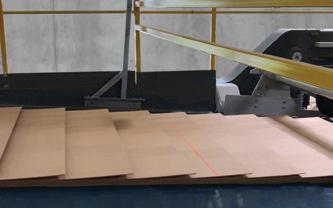

Monitor It — Identify It — Eliminate It
X Immediately identify and correct warp without operator intervention
X Continually measure 1200 points across the full web width with laser precision
X Produce high quality sheets sooner by utilizing Machine Learning algorithms (AI)
X Fully integrates and communicates with CoparSolutions’ QualityMaster™ System
Laser Warp Correction AI brings the latest AI technology to corrugator process control. This next generation of automation combines the precision of laser measurement with closed-loop process control to enhance sheet quality, improve consistency, eliminate operator error, and maximize productivity and profitability!





MIKE BUTLER DOMTAR PACKAGING VICE CHAIRMAN MIKE.BUTLER@DOMTAR.COM

JEFF DIETZ KOENIG & BAUER CHAIRMAN
JEFFREY.DIETZ@KOENIG-BAUER.COM

BRIAN FOLEY BOBST SECRETARY BRIAN.FOLEY@BOBST.COM

WARREN BIRD
JB MACHINERY DIRECTOR WBIRD@JBMACHINERY.COM

JOHN BURGESS PAMARCO IMMEDIATE PAST CHAIRMAN JOHN.BURGESS@PAMARCO.COM
In today’s packaging landscape, sustainability is no longer a niche concern; it’s a driving force behind purchasing decisions, innovation, and long-term strategy. For suppliers, embracing and promoting eco-friendly practices is not just good for the planet—it’s good for business.
Even when sustainability isn’t explicitly requested by your independent corrugating customers, it should be a central theme in your conversations and proposals. You never know when a corrugating customer will need to respond to pressure from their own customer or engage with a new prospect seeking packaging solutions that minimize environmental impact. According to McKinsey & Co.’s 2025 global consumer survey, more than 60% of consumers say they are willing to pay more for sustainable packaging. This reinforces the idea that even if your corrugating customer isn’t asking for ecofriendly options, their end customers likely are—and they’re willing to invest in it.
Establishing yourself as a sustainability-minded partner starts with what you already offer. By highlighting your sustainable sourcing certifications and products that feature recycled content, recyclability, or biodegradability, you position yourself as a forward-thinking partner who understands the evolving market. This doesn’t mean you need to overhaul your entire product line; just elevate the sustainable attributes you already offer. Whether it’s using recycled content, reducing water and energy usage in production, or offering alternatives to plastic-based materials, these are valuable differentiators.
Don’t wait for customers to ask. Take the initiative to share your sustainability story. Proactively reach out to your customers and provide them with information about your company’s environmental footprint before they ask.
Make sure your sales teams are equipped with clear, compelling messaging around these features, and consider creating sustainability-focused collateral that converters can use in their own customer presentations.
But sustainability alone won’t build lasting relationships. The most successful supplier-converter relationships are built on trust, transparency, and collaboration. Agility and responsiveness are key. As a supplier, your ability to communicate openly, especially when challenges arise, can make all the difference. Whether it’s a delay, a shortage, or a shift in availability, addressing issues promptly demonstrates reliability and respect. Delivering difficult news is never easy, but doing so with a clear plan shows confidence and opens the door to joint problem-solving, which can strengthen the relationship. Converters value partners who are proactive and invested in their success. This spirit of collaboration can also lead to exciting opportunities for innovation. By working closely with converters, suppliers can co-develop new products, explore alternative materials, or refine processes that benefit both parties. These joint efforts deepen the partnership and can result in unique offerings that set your customers apart in the marketplace. To foster this kind of relationship, consider regular check-ins beyond transactional updates. Share industry insights, market trends, and regulatory developments that may impact your customer’s business. Offer to host joint training sessions, tours of your facility, or brainstorming workshops. These efforts show that you’re not just a vendor, you’re a strategic ally.
Mike Butler is senior director, packaging sales, at Domtar and vice chairman of AICC’s Associate board.

BY DAVID WIENS
When it comes to AI advancements, the corrugated industry spends enormous energy talking about predictive maintenance, scheduling algorithms, and smart sensors on the plant floor. These technologies matter, but they come with long timelines, expensive integrations, and data challenges.
Meanwhile, the biggest cost in our industry often gets less attention. Choosing board combinations is still driven by experience, McKee’s formula, and conservative lab testing. That means boxes are frequently overengineered “just to be safe,” burning through fiber, margin, and sustainability goals.
The next wave of quick wins may not come from another shop floor upgrade but from AI applied earlier in the process: at the design stage, before the first sheet is ever cut. Here, AI is showing real potential to optimize board recipes, propose novel configurations, accelerate customer sampling, and even test designs virtually.
Ask any designer: picking the right liner and medium combination is equal parts science and gut feel. But what if AI could eliminate the guesswork?
Recent research suggests it can. A 2025 study from Kasetsart University trained a backpropagation neural network on 630 commercial box samples with 17 design and material inputs. The model predicted box compression test (BCT) results with an R² of 0.982, far outperforming McKee’s formula at 0.737. That is not a minor statistical improvement. It means AI can pinpoint the lightest paper grades that still deliver required strength.
The business case is obvious. Instead of overspecifying to avoid failures, converters could use data-driven predictions to specify just enough paper. For a high-volume plant, even a 2%–3% reduction in fiber use translates into significant savings and sustainability gains.
Most converters select from a familiar playbook: B, C, and E flute single-wall or a handful of double-wall options. But AI has no allegiance to the catalog. Algorithms can explore hybrid or unconventional configurations such as pairing recycled liners with virgin outers, mixing microflutes with larger flutes, or even proposing entirely new flute geometries.
Academic work from Poznań University of Life Sciences has already shown that AI can evaluate variations in flute angle, curvature, and wall layering to predict strength and cost trade-offs. Instead of defaulting to 200# C flute, a future AI co-pilot might recommend 175 gsm recycled medium paired with 200 gsm kraft outer liner and an F flute micro layer for stacking strength at lower cost.
The point isn’t that AI replaces engineers. It’s that it broadens the design space, giving humans new material recipes that might never be considered otherwise. These advances at the corrugator level highlight how AI is reshaping material choices and board construction. But design innovation doesn’t stop at the paper recipe. Once the board itself is specified, converters still face the challenge of turning those materials into box designs quickly and cost-effectively for customers. That’s where AI is beginning to transform the design office through automating
drawings, accelerating sampling, and reducing the time it takes to get from concept to customer approval.
Every converter knows the pain of customer sampling. A prospect asks for a new shipper, and the design team spends days drafting dielines, cutting prototypes, and iterating until the buyer signs off. AI is attacking that bottleneck.
Tools such as Sourceful and Pacdora now generate dielines and 3D mockups automatically from basic dimensions. Sourceful even markets its AI as “your personal packaging designer,” delivering print-ready dielines by combining AI-generated concepts with expert human refinement. Applied to corrugated, this means a customer request could trigger an AI agent that drafts the drawing in minutes and hands off to the team for finalization. Designers still review and refine, but they’re no longer redrawing rectangles all day. The payoff is obvious: shorter sales cycles, faster customer response, and design teams focused on high-value creativity instead of repetitive CAD work.
Design is only half the battle. Testing strength and durability is just as imperative for a plant. Traditionally, every iteration requires physical samples, compression tests, and sometimes drop or vibration cycles. That’s time, labor, and wasted board.
AI is making those cycles virtual. Studies show neural networks can predict edge crush test and BCT results for boxes with cutouts, hand holes, and perforations with R² values around 0.97. In other
Morrisette Packaging’s journey into high-graphics corrugated production began eight years ago with the formation of our design department. This expanded our value proposition, totally transformed our company identity, and inspired us to explore the next generation of print technology, where Koenig & Bauer emerged as the clear leader. Today marks the next stage of our evolution as we prepare to launch into full in-house high-graphic corrugated manufacturing for the very first time. We are proud to announce a partnership between two multi-generational family-owned businesses to bring first of its kind technology to North America. The cuttingedge Celmacch ChromaCUT High Tech Rotary Die Cutter and Magnus Folder Gluer will enable us to provide the most sophisticated high-graphics corrugated printing and finishing capabilities in North America.
— John Morrisette President – Morrisette Packaging Third Generation Leadership
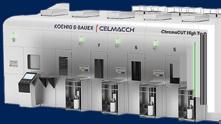

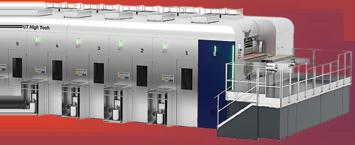
words, the AI “knows” how structural quirks will affect strength.
AptarGroup demonstrated the value in practice. Partnering with Monolith AI, the company built a self-learning model to predict bottle stability in seconds, slashing the number of prototypes required. The same principle applies to corrugated. An AI tool trained on past compression and drop tests could estimate stacking strength, or likely failure modes, of a new box before anyone sets up the CAD table. That doesn’t eliminate the need for final lab validation, but it drastically reduces the number of prototypes and accelerates time to market.
The beauty of design-side AI is that practical benefits are available now:
• Predict paper requirements more precisely.



• Generate dielines and 3D previews instantly.
• Reduce prototype waste through virtual testing.
These don’t require full-scale plant integration or years of collecting sensor data and training models. They are modular tools a converter can begin piloting today.
Longer-term, we may see generative AI proposing entire board configurations, novel flute profiles, or hybrid double-walls engineered for specific loads. Think of it as a board-grade advisor that sits alongside your design team, suggesting optimized recipes in real time.
AI in corrugated doesn’t have to mean costly sensors or complex scheduling models. Sometimes the most immediate gains come upstream.
By adopting AI for board optimization, dieline generation, and virtual testing, converters can save paper, speed sampling, and cut development costs while improving responsiveness to customers.
AI isn’t set to replace skilled designers anytime soon, but it is already beginning to equip them with a better arsenal. For an industry facing margin pressures and rising material costs, that’s a technology shift worth embracing.
Don’t just think about smarter machines. Think about smarter boxes, designed with AI before the cut.

David Wiens is CEO of BPS AI Software. He can be reached at david@bpsaisoftware.com



































Q U E S T I O N S ?

A s k A I C C ’ s e x p e r t s y o u r c o r r u g a t e d , f o l d i n g c a r t o n , r i g i d b o x , a n d r i s k m a n a g e m e n t q u e s t i o n s .
F i n d y o u a n s w e r s a t
A I C C b o x . o r g / E x p e r t s .




Over


Unlimited











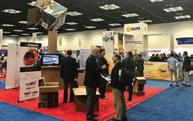

Hosted twice a year, they o er industryleading programming, speakers, workshops & peer panels, along with networking opportunities and much more!


A well trained employee is more likely to stay at a company longer and perform better. With 15–20 seminars and webinars each year, we’ve got professional development for all departments.


With 5–8 regional topical meetings each year, you’ll have the chance to connect with independent converters across the country.


Dedicated to providing the rising stars of the industry with the information needed to develop and thrive in the paper packaging industry!













Define your pain points and AICC will develop a course based on your needs, create course materials, and bring industry trainers directly to your plant!


These groups allow participants to confide in peers, share ideas, receive honest feedback & give advice to help businesses grow.
BY MITCH KLINGHER
Unless there is a paradigm shift in American politics, which is always possible, we have entered into a tax and business climate that is quite favorable for the closely held independent converter.
Tax rates for C corporations are permanently fixed at 21% and for passthrough entities at 29.6%. Deductibility for research costs and interest expense have been largely restored. One-hundred percent bonus depreciation has now been made permanent, making the climate for purchasing equipment more favorable. The estate tax exemption has been increased to $15 million and is indexed for inflation, so a husband and wife can pass $30 million in assets to their heirs, making it much easier for families to protect the wealth they have accumulated. We also have an administration that is committed to imposing far fewer regulations on businesses, thus reducing the costs of operating.
Paper companies are focused on the imbalance of supply and demand in the containerboard markets and are closing mills at never-before-seen rates. Per the chart below, a staggering 3.68 million
tons of production will be taken out of the market this year. There are about 825,000 tons of capacity expected to enter the market over the next two years, so the net reduction equals roughly 7% of the total marketplace.
The chart also highlights the shift of the marketplace to lighter-weight recycled grades of paper, as all of the projected new capacity is going to produce recycled paper, and almost all of the mills that closed produced virgin paper. Fastmarkets RISI suggests that recycled linerboard
sells for $100 per ton less than virgin, while Bloomberg and others suggest that the discount is larger. In any event, specifying lighter-weight recycled paper combinations in the board that they utilize may allow independents to offer their customers more competitive profits and higher profit margins.
There has been little to no growth in corrugated box shipments since the end of the COVID-19 pandemic, and in point of fact, Fastmakets RISI has reported that corrugated shipments are down 2.1%
year over year in the first quarter of 2025 and predicts a 1.9% decline for the full year. Despite this, there have been several increases in the reported price of containerboard, so the mill closures should go a long way toward shoring up prices. In my travels over the past 35 years, I have seen independents generally pick up margin when the price of containerboard goes up and often lose margin when the price of containerboard goes down. This makes the mill closures and the expected effect on containerboard prices even more welcome.
The converting business has fundamentally changed over the past 30 years. While it was always somewhat capital- and labor-intensive, the cost of both has risen significantly. When I first got involved in the business, I vividly remember a client who had a few million dollars in sales and went out and bought an old flexo for $50,000, set up shop in an abandoned bowling alley, and was profitable in his third month of operations. Those days are long gone. We now live in an era of automatic case erectors and a need for making our packaging to precise tolerances.
Printing is also being held up to very high standards, and inside and outside printing is becoming more the norm than the exception. Labor rates are at an all-time high and the price of benefits is enormous, while at the same time the labor pool for plant labor has been problematic, although it does show some signs of improvement. Similarly, the price of ancillary equipment, such as CAD tables, ink kitchens, and plate and die storage, runs into millions of dollars. Software systems and solutions for things such as order processing, graphic and structural design, and plant reporting and efficiencies are more sophisticated and significantly more expensive.
The capital costs of starting a modern sheet plant without taking into account real estate can be in excess of $20 million and a full-blown corrugator plant in excess of $35 million, depending on how much new equipment is purchased, how
much conveyor is required, etc. The cost of industrial real estate has almost doubled in the last 10 years, whether owned or rented. Although this seems to be stabilizing somewhat of late, the days of leasing space for $2 per square foot are long gone. All of these costs, in conjunction with startup and other soft costs, create a significant barrier to entry into this marketplace.
With all of this said, new plants are being built, but most of them are being built by integrated companies and some of the larger independent converters in order for them to stay competitive with their integrated brethren. No one really knows how much of the marketplace belongs to independent converters versus integrated companies, but no matter how sophisticated the integrated converting plants become, there will always be a need for the independent sector to handle shorter orders that go across multiple machines that require fast turnaround or managed inventory levels. There has also been tremendous consolidation among the independents, and the ones that are left are for the most part larger and better capitalized. In 1990, there were 25 independent corrugators in the New York area alone; today there are three and not that many sheet plants either. The same kind of consolidation can be said about Chicago, Los Angeles, Atlanta, and just about every other major city in the country.
I think that we are on the cusp of a golden age for the independent converter. The climate for taxation and government regulation is favorable. The containerboard producers are making the moves necessary to foster future price increases, which should be good for independents. There are significant barriers to entry into the marketplace, and though overall demand has been sluggish, there will always be a need for the kind of innovative and customer-oriented packaging that the independent converter provides. Interest rates are coming down, which
will help reduce capital costs and improve operating margins.
There is, however, some significant uncertainty about the effect of tariffs on the marketplace, and some kind of a recession may be in our near future. So while I am optimistic about the long-term future of the independent converter, this may not be the time to take on additional risk. My advice for all of you is to come up with a long-term plan to work your niches and to develop new ones, to continue to become more efficient in your plants, and to look for good deals on equipment purchases and upgrades. In my opinion, this plan should include taking steps to learn how to convert lighter-weight recycled paper. Major European producers such as Smurfit Kappa and DS Smith are here, and their European customers have long embraced this change. All of the newer mills coming online have the capacity to manufacture lighter-weight recycled board, so this will become an increasingly important part of your future. My advice is to come up with a plan to embrace, rather than resist, this trend.
Tariffs and the weaker dollar have raised the cost of equipment significantly, since so little of it is produced in the United States, but 100% bonus depreciation is here to stay, so there is no rush to maximize your tax position. This is the time to pay down debt and build up capital reserves and plan your long-term future, while at the same time you should (always) have a plan in place to deal with a temporary economic downturn. The failure to plan is usually a plan to fail, and this would be a good time to go into “planning mode” and make sure you make the right decisions to maximize your long-term profitability.

Mitch Klingher is owner of Klingher Nadler LLP. He can be reached at 201-731-3025 or mitch@klinghernadler.com
If you are a converter, are you investing in the future of your independent box plant? If you are a supplier, are you investing in the future of your business and the businesses of your customers and prospects? If you answered no to the above and want to be a yes, please consider making a pledge or donation to the Foundation for Packaging Education. It’s easy, and it’s vital to do so. Your pledge dollars are tax-deductible, as the foundation is a 501(c)(3) tax-exempt organization for the specific purpose of funding educational efforts by AICC and others for the benefit of individuals already working in corrugated, folding carton, and rigid box manufacturing.
Programs for these folks are constantly being developed and improved by AICC and others to remain relevant and evolutionary. The industry is constantly changing, and the tools to flourish for individuals in the industry need to evolve. Knowledge is power. The development of these programs involves subject matter experts and broad accessibility. This is where your pledge bears fruit. AICC members have completed more than 26,000 online courses since the courses became a member benefit back in early 2017. Continuous creation of content is key to the program’s success and the success of those taking the time to access it.


The foundation needs your support. Please visit www.packaginged.org or scan the QR code on this page to learn more—and make your pledge.












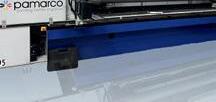


































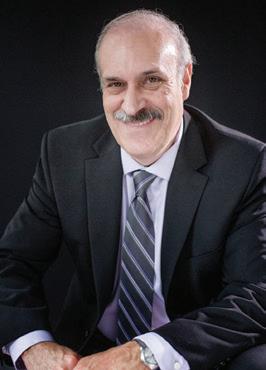

The International Corrugated Packaging Foundation (ICPF) posthumously inducted Jeffrey Schwarz as the 29th member of the ICPF Circle of Distinguished Leaders. The induction ceremony took place on Tuesday, October 7, during AICC’s Fall Meeting in Chicago, followed by a dinner and reception honoring Schwarz at Smith & Wollensky.
The program honors exceptional individuals—leaders whose vision, creativity, and energy have moved the corrugated industry forward.
Schwarz started in the industry working for his father Jack’s company, Trey Corrugated, and then moved to startup company Performance Corrugated. In 1998, Jack, Jeff, and Jeff’s brother, John, founded Schwarz Partners. What began as an independent sheet feeder grew to include partner companies in the packaging, paper, transportation, and recycling industries. Jeff was instrumental in spearheading sheet feeder co-ops and forging
Watch the tribute video for Jeffrey Schwarz and learn more about ICPF’s Circle of Distinguished Leaders program.
relationships between corrugated industry companies. Following a yearlong battle with glioblastoma, an aggressive brain cancer, Jeff passed away on November 26, 2023. Jeff’s induction marks the first time two members from the same family have been honored, with his father Jack having joined this prestigious group in 2011. Watch Jeff’s tribute video at youtu.be/ ESil3FefPIY or by scanning the QR code on this page.

Industry contributions on behalf of Jeff led to the most successful Circle of Distinguished Leaders nomination to date. The Corrugated Partners Group (CPG), a collaborative network of sheet feeders, donated $150,000 on behalf of Jeff for his posthumous induction. Contributions were received from the following CPG facilities: Alliance Sheets, Encorr Sheets, Flutes Hanna, Flutes Zionville, Heartland Sheets, Independence Corrugated, Keystone Sheets, NewCorr, New England Sheets, North Star, Pinnacle Corrugated, SPP Miami, Triumph Sheets, Star Corr, and StarCorr de México.
In another sizable donation, Pacific Southwest Container contributed $50,000 to recognize Jeff’s legacy and longstanding impact on the corrugated industry. ICPF also thanks the following companies and individuals who made donations in Jeff’s name to support ICPF programs and initiatives: AICC, American Box Co., Amtech Software, Atlas Container, Bay Cities, Buckeye Corrugated Inc., BW Papersystems,
Central Package & Display, DanHil Containers, Domtar, Equipment Finance Corp., Fibre Box Association, Fosber America, Great Northern Corp., Green Bay Packaging, Jamestown Container Cos., Jim Johnson, Peggy Lacy, Liberty Diversified International, Litho Press, Bob and Debbie McIlvaine, Packaging Express, Jim and Pam Porter, Rick and Mary Van Horne III, Wasatch Container, Welch Packaging, and Wertheimer Box.
To learn more about the Circle of Distinguished Leaders program, past and future nominees from the corrugated packaging industry, and program donation opportunities, visit ICPF’s website or scan the QR code on this page.

Caitlin Salaverria is president of International Corrugated Packaging Foundation.











Give your kraft liners a brilliant foundation with CorrWhite, Magnum’s highperformance titanium white coating. Engineered to reduce rod wear and deliver superior after-wax brightness and opacity, CorrWhite provides remarkable brilliance with less coat weight; making it the best value on the market. Partner with Magnum Inks & Coatings for responsive service, expert support, and coating solutions that help your prints shine. Let’s coat together!





Iwas conversing with our friend Steve Young (a former AICC president, for those newer members) when he mentioned that a friend of his had come across a reference that St. Fiacre was the patron saint of boxmakers. Steve naturally shared this with me, and this revelation led me to do some research.
Legends often grow in unexpected ways, and so it is with St. Fiacre. He is best known as the patron saint of gardeners and cab drivers. And, somewhat curiously, of boxmakers. While his connection to soil and spade is well documented through the centuries, his link to the craft of boxmaking rests in the realm of folklore, where practicality and symbolism combine.
Fiacre was a seventh-century Irish monk who settled in France, renowned for his deep piety and skill in cultivating herbs, flowers, and vegetables. According to tradition, he built a small hospice near his home to welcome travelers and the sick. To store medicinal plants, seeds, and the humble meals he provided, Fiacre fashioned sturdy wooden containers. The boxes were not elaborate, but strong enough to keep herbs dry, roots fresh, and supplies organized for those in need. Over time, people noticed not only the abundance of his garden, but also the neat wooden chests and cases that held his gifts.
Storytellers and the passage of time have turned this detail into an allegory. The box, they said, symbolized the human heart—capable of holding both virtue and vice. Fiacre, through prayer and discipline, showed how one might prepare the “inner box” to hold only grace and charity. Boxmakers, whose craft at the time involved shaping plain wood into vessels of both utility and beauty, found in Fiacre a fitting heavenly patron.
As guilds of artisans spread across Europe, many sought saints who mirrored their work in life or parable. For boxmakers, St. Fiacre offered both a practical precedent— his handmade containers—and a spiritual metaphor. The association endured and eventually joined the more famous patronages linked to his name.
Thus, while gardeners may know Fiacre for his miraculous beds of flowers and cab drivers for the carriages once nicknamed “fiacres” in Paris, boxmakers quietly claim him as their own. In the end, his life of humble service offered a model of craftsmanship rooted in care, order, and devotion—qualities that any artisan, whether tending soil or making boxes, might revere.

Michael D’Angelo AICC President
n award-winning printing line for corrugated












multi-award-winning modular printing solution Up to 3 flexo units + single pass inkjet + rotary die cutter
















Kento ybrid Converter: Feeder, primer, 3 flexo units, digital single-pass module, OPV, rotary die cutter
The typical obstacles: High costs of inks, format limits, and steep capex. Kento offers ink savings up to 80%, the widest single-pass inkjet, and a cost-effective and scalable entry model that grows with your operation.


Flexo printing for solid backgrounds, white ink, special colors




igital printing for high-quality images and personalization
Schedule an online or on-site personalized demo


We are corrugated


otary die cutting for increased overall equipment efficiency
ask for a live demo

download a brochure
























